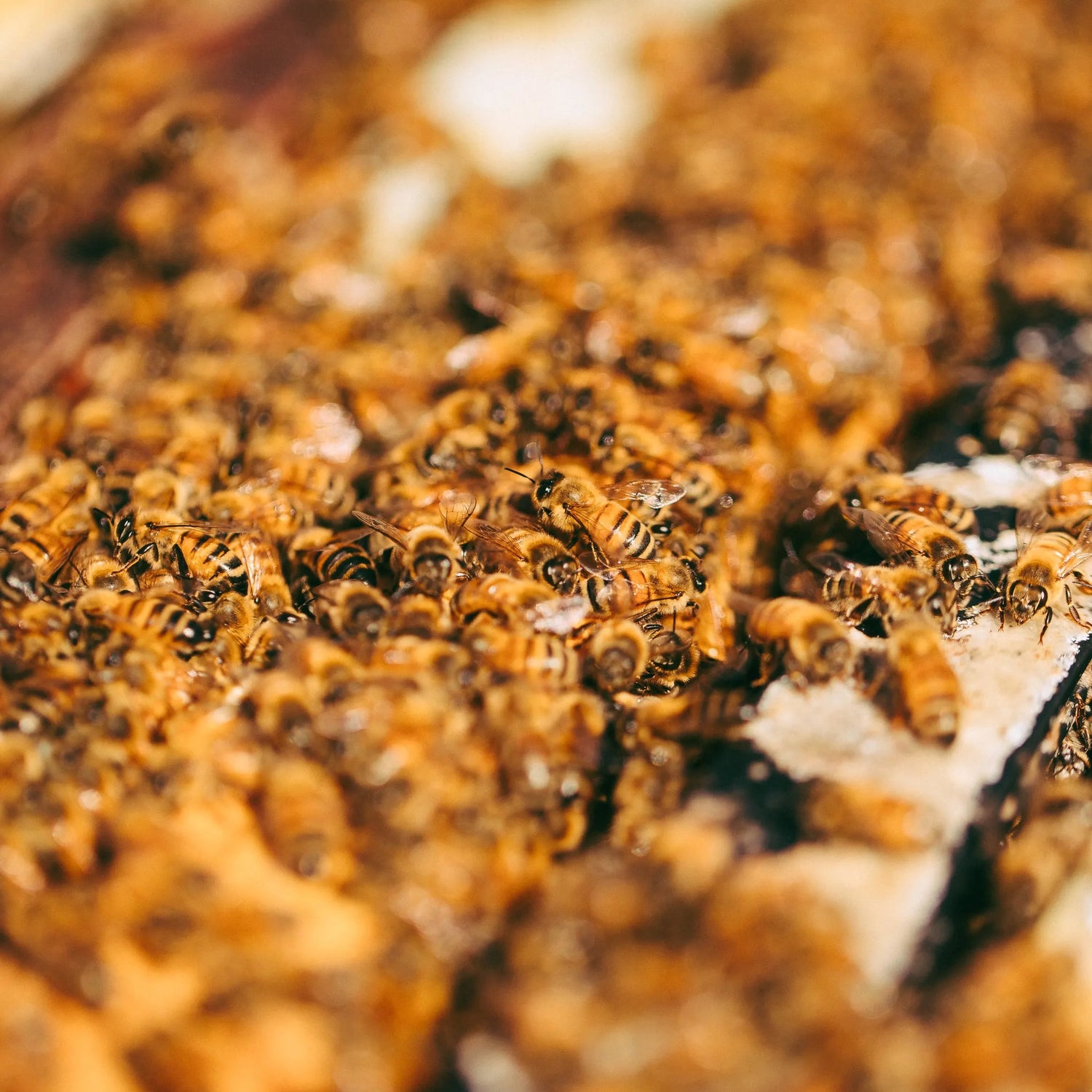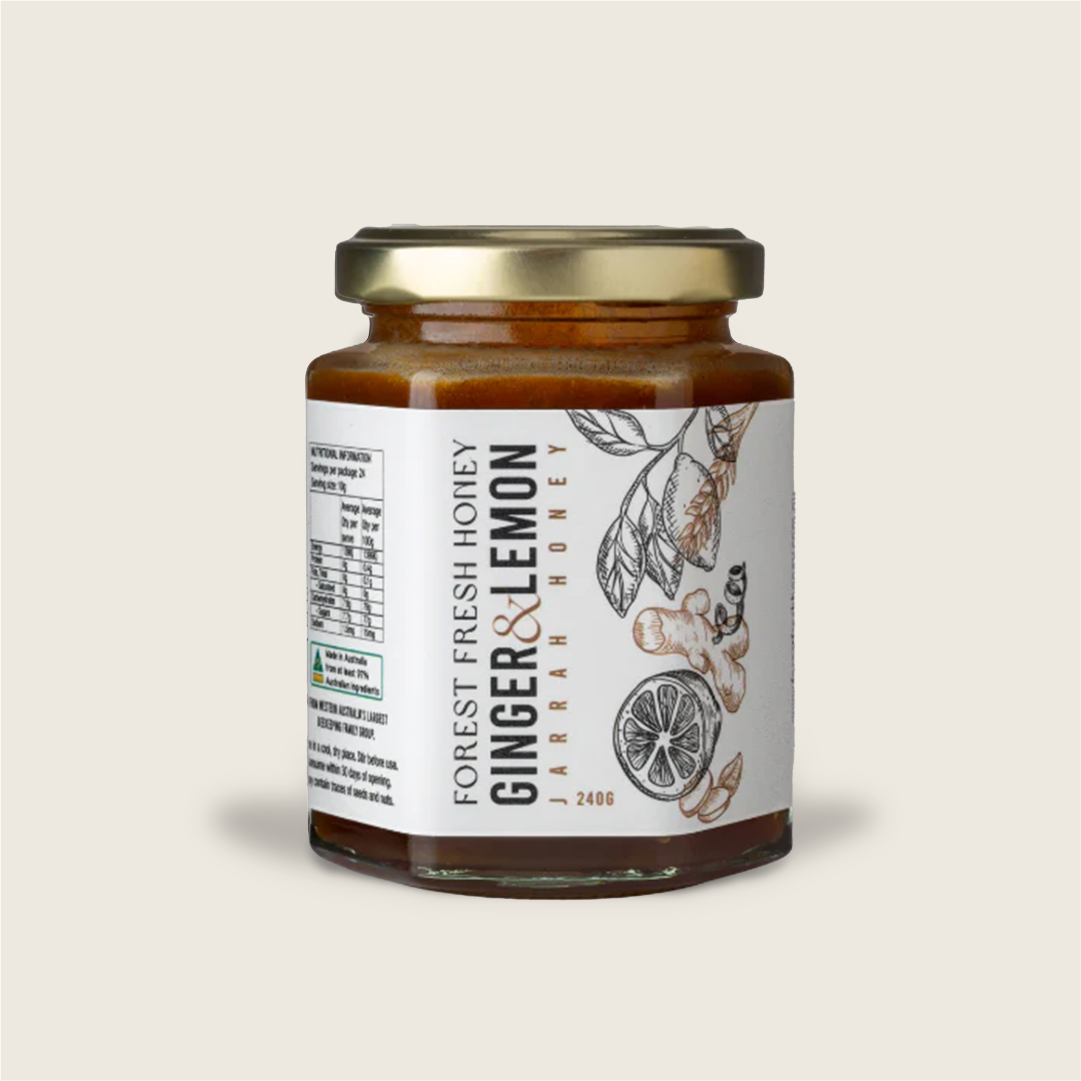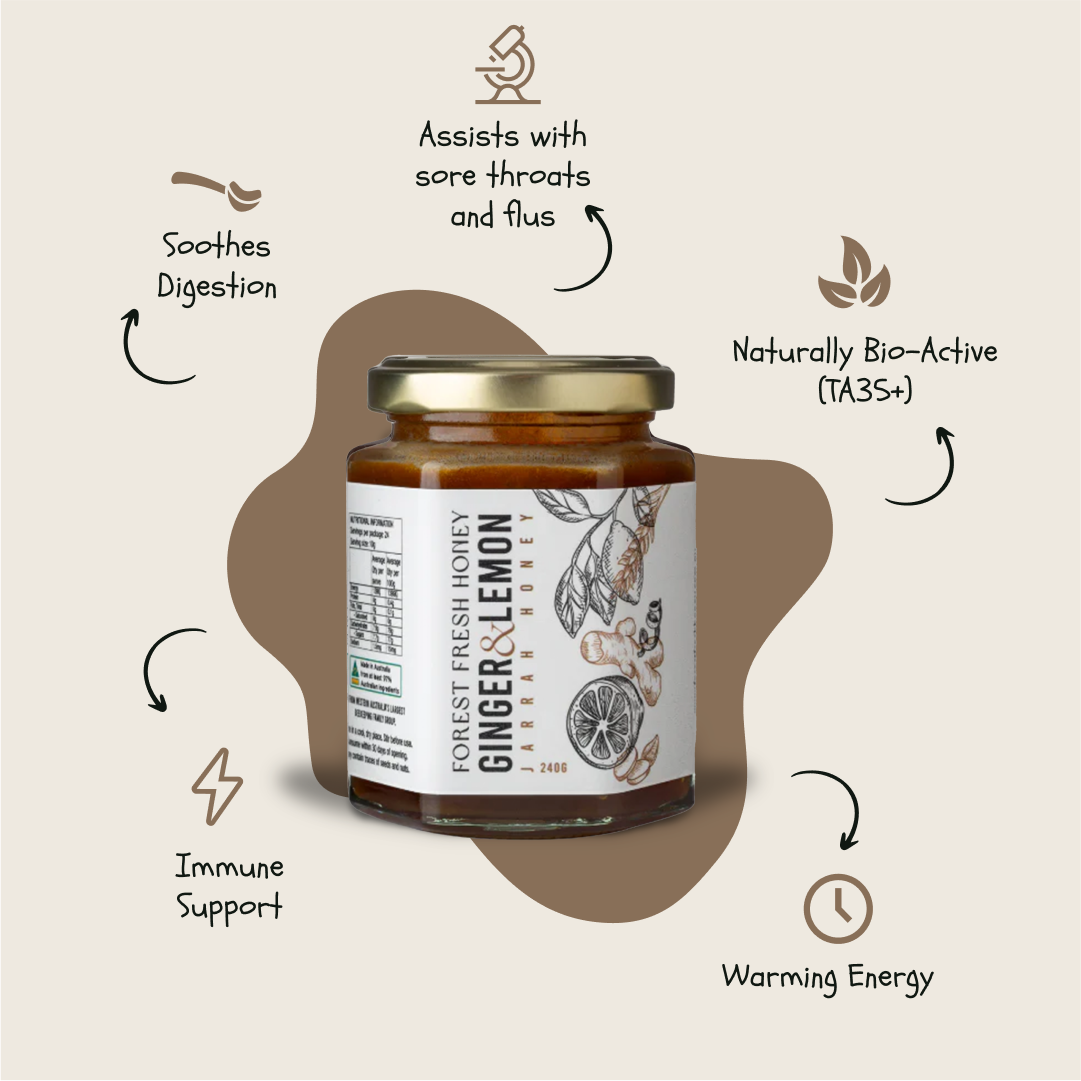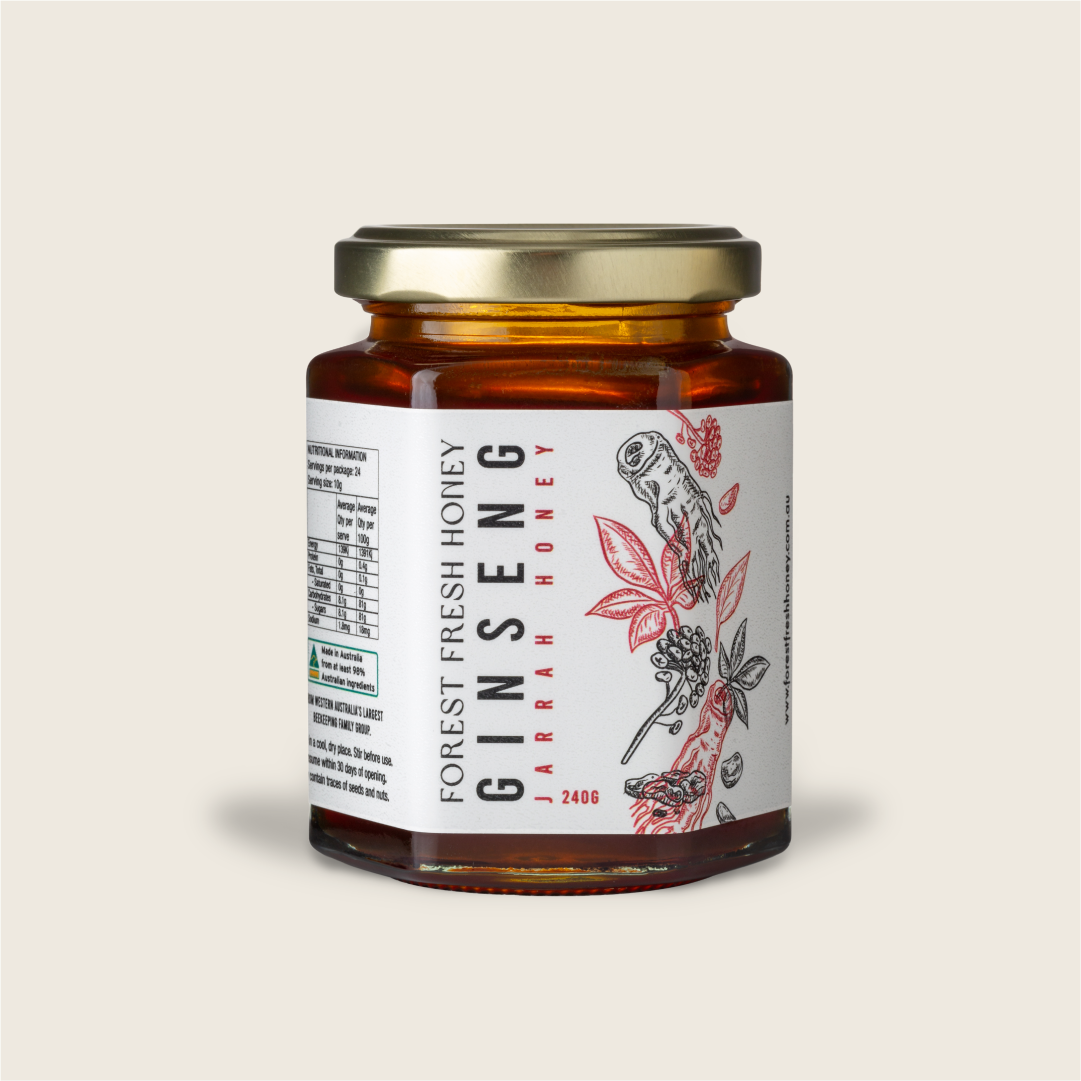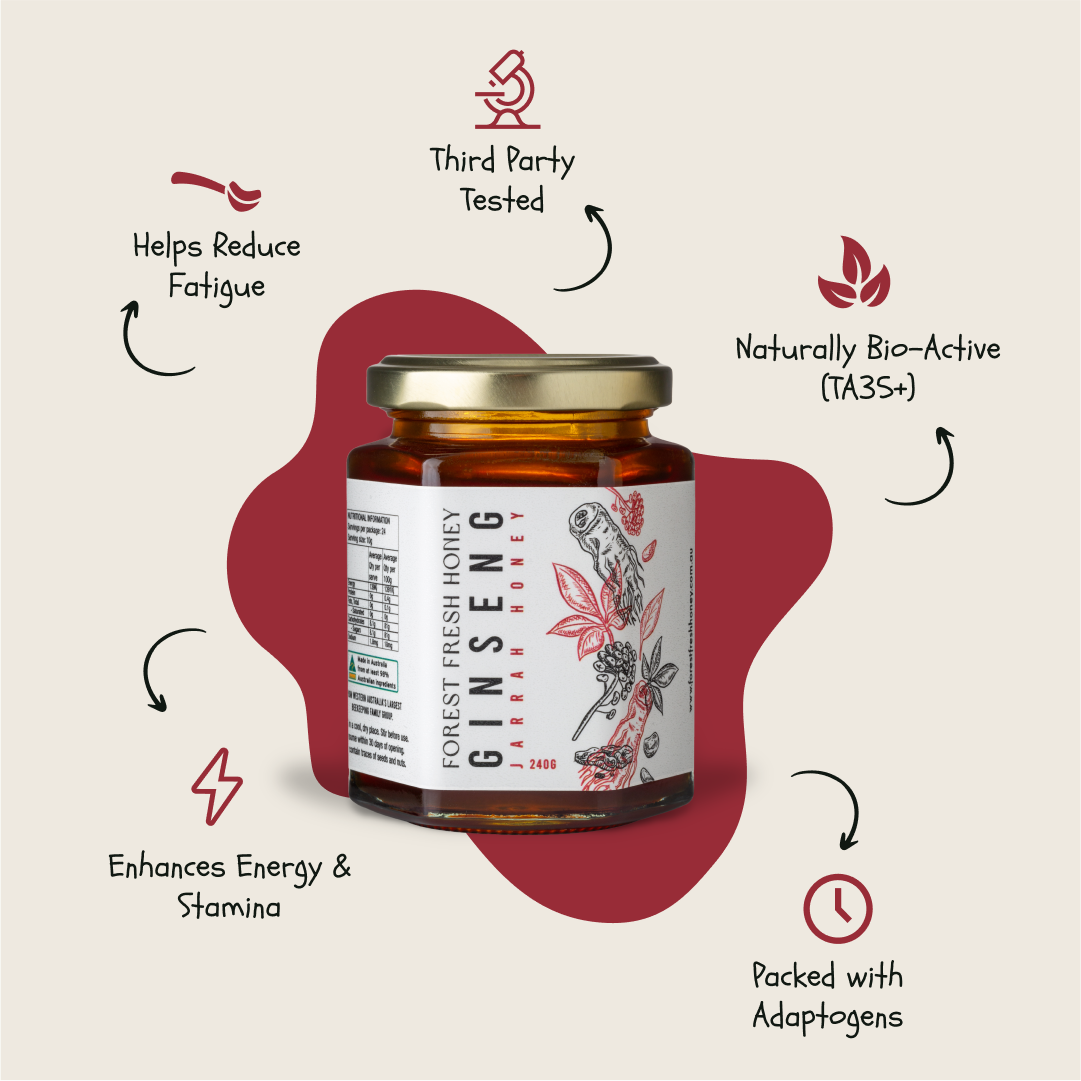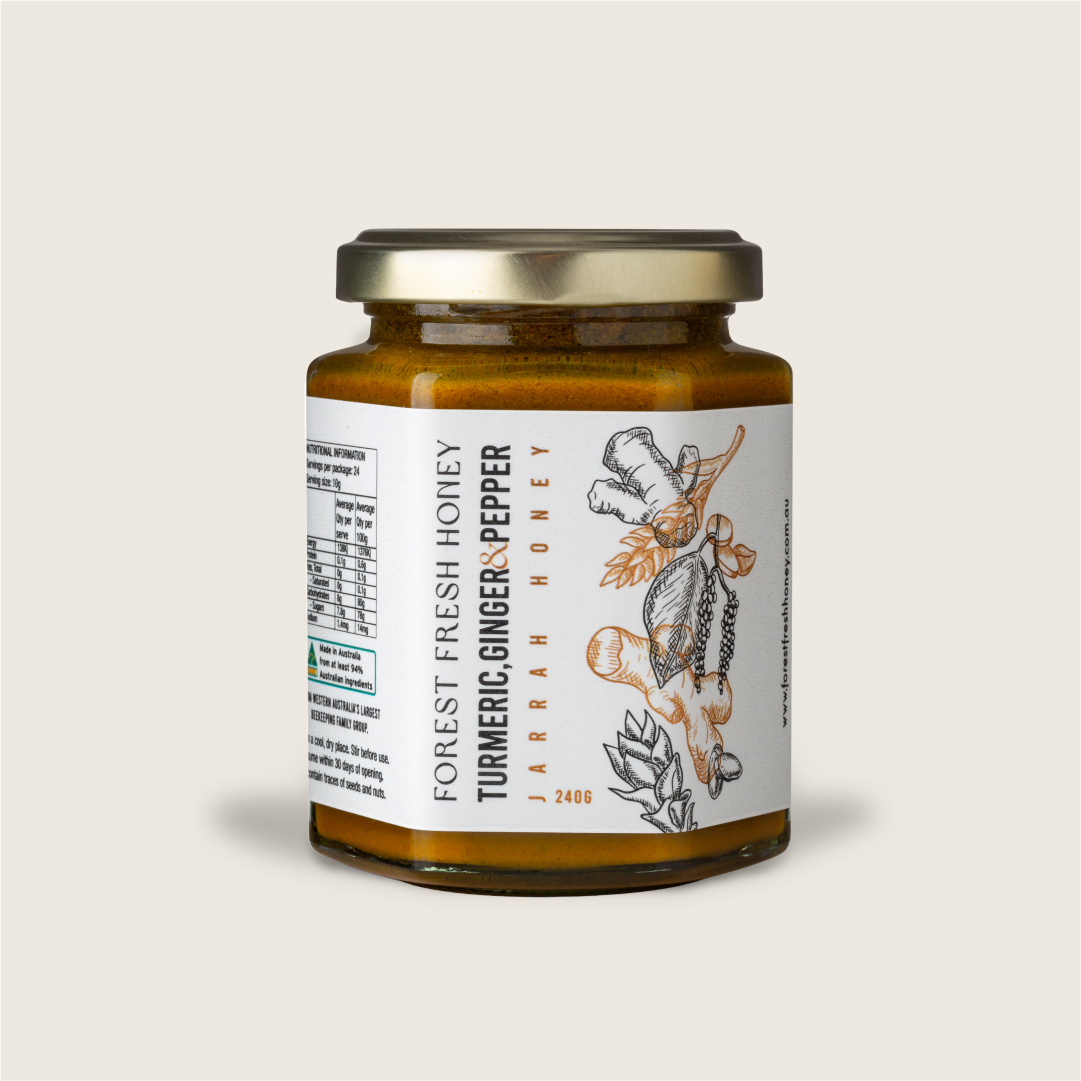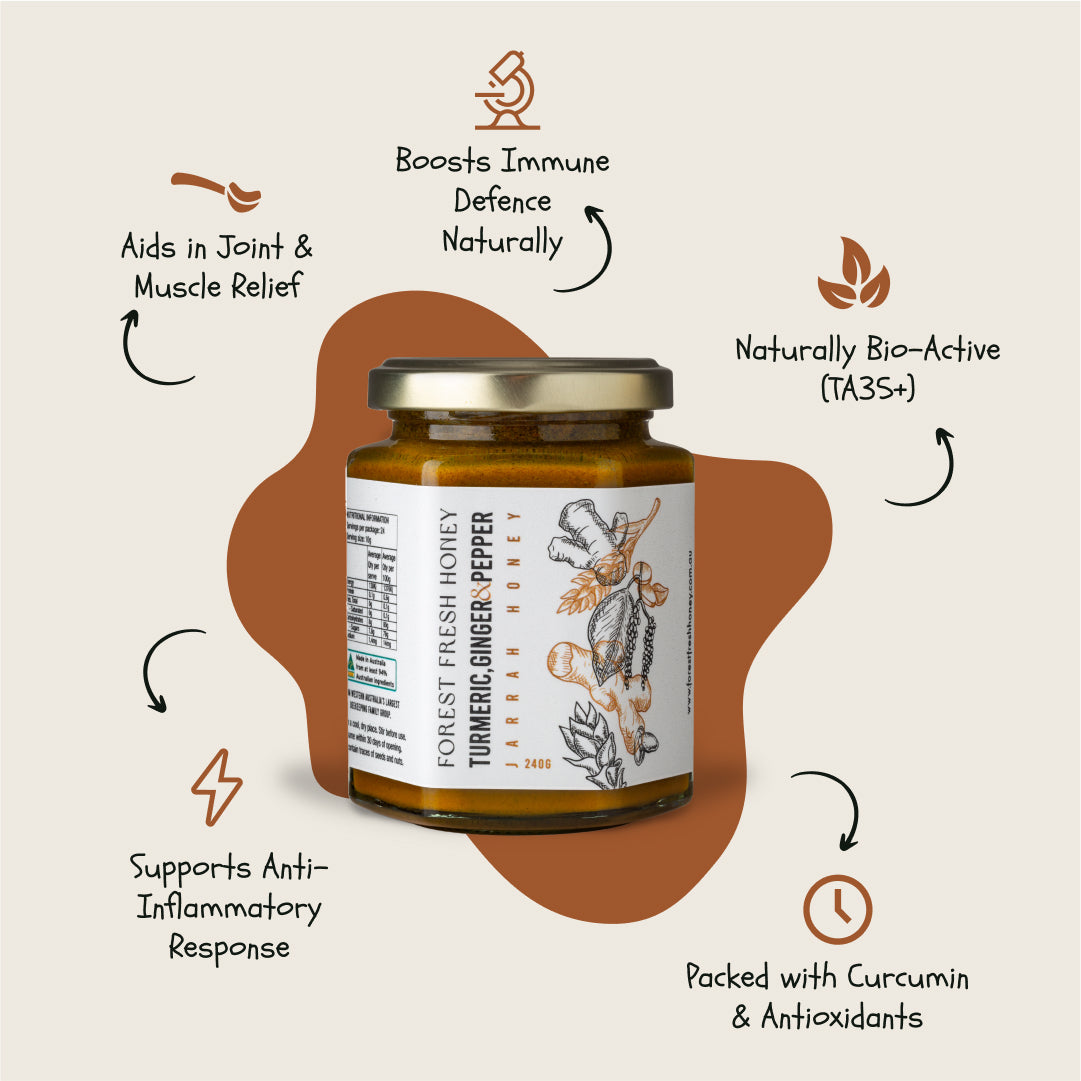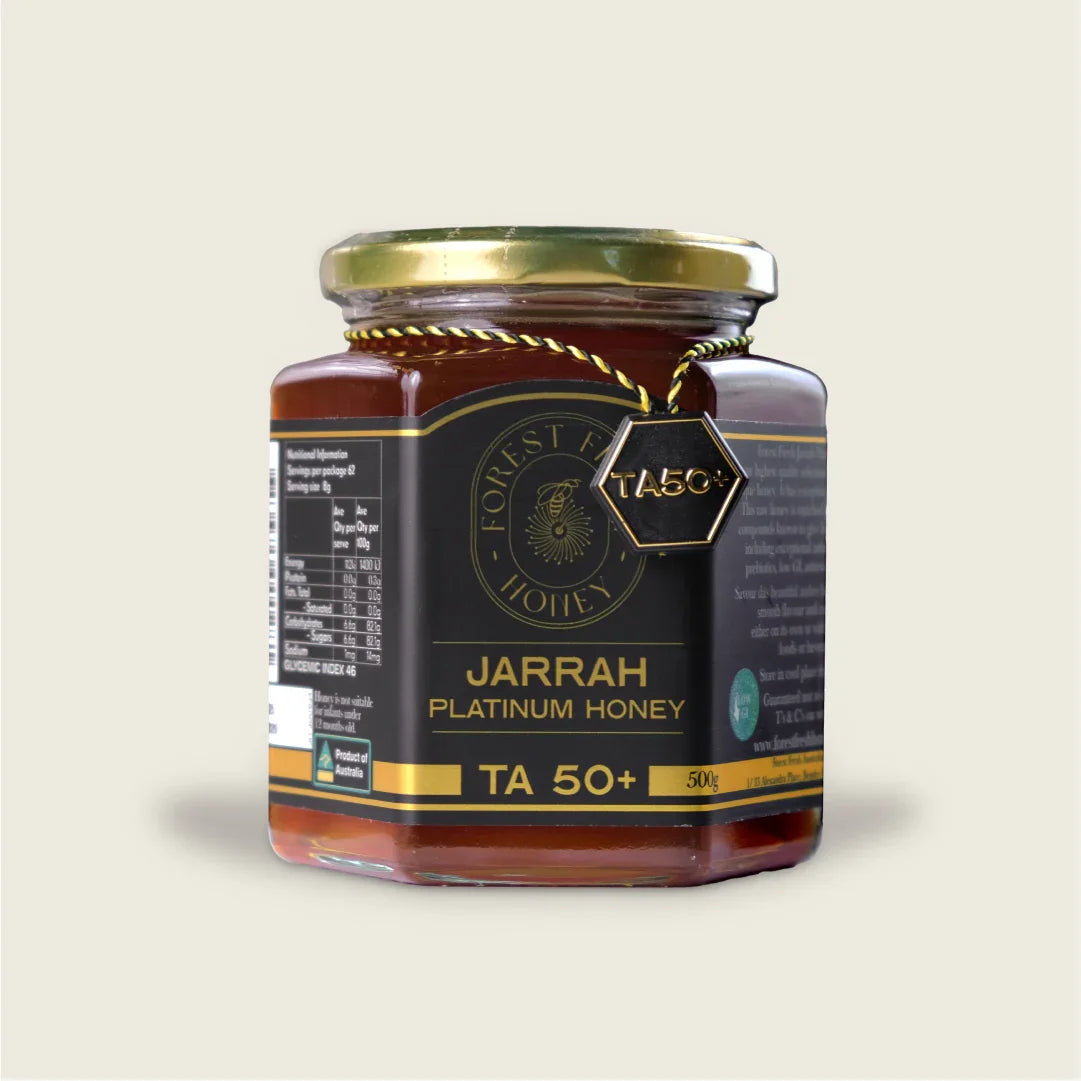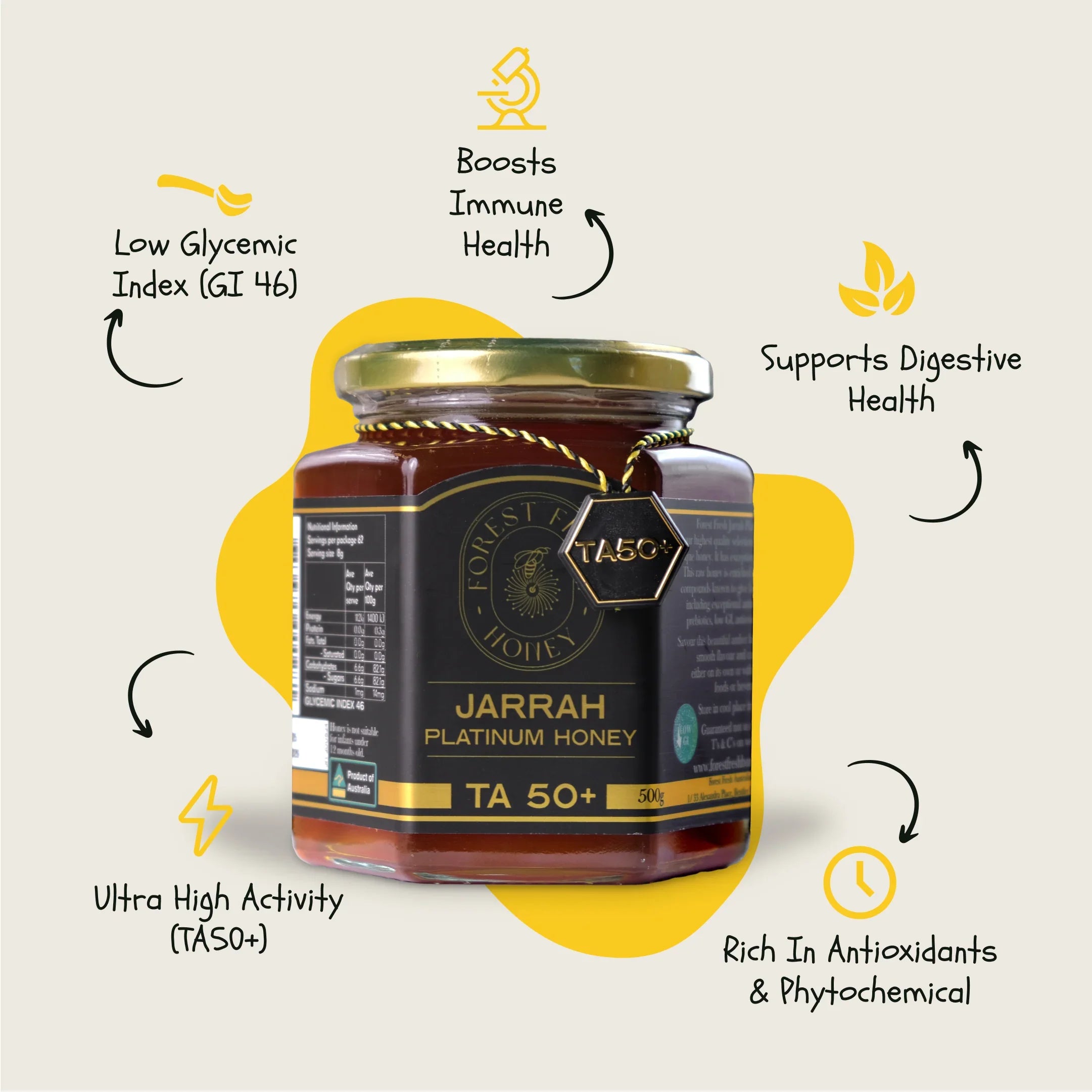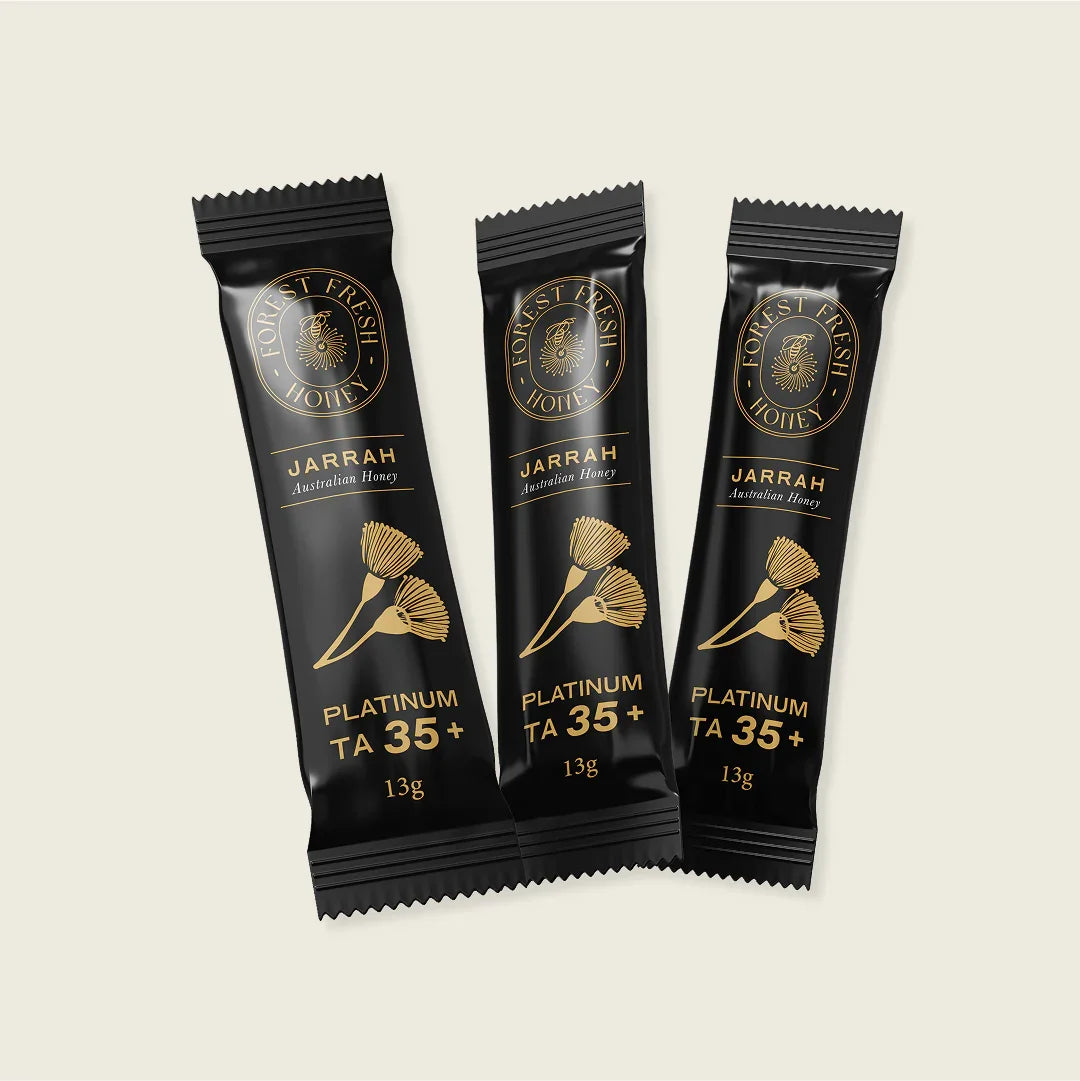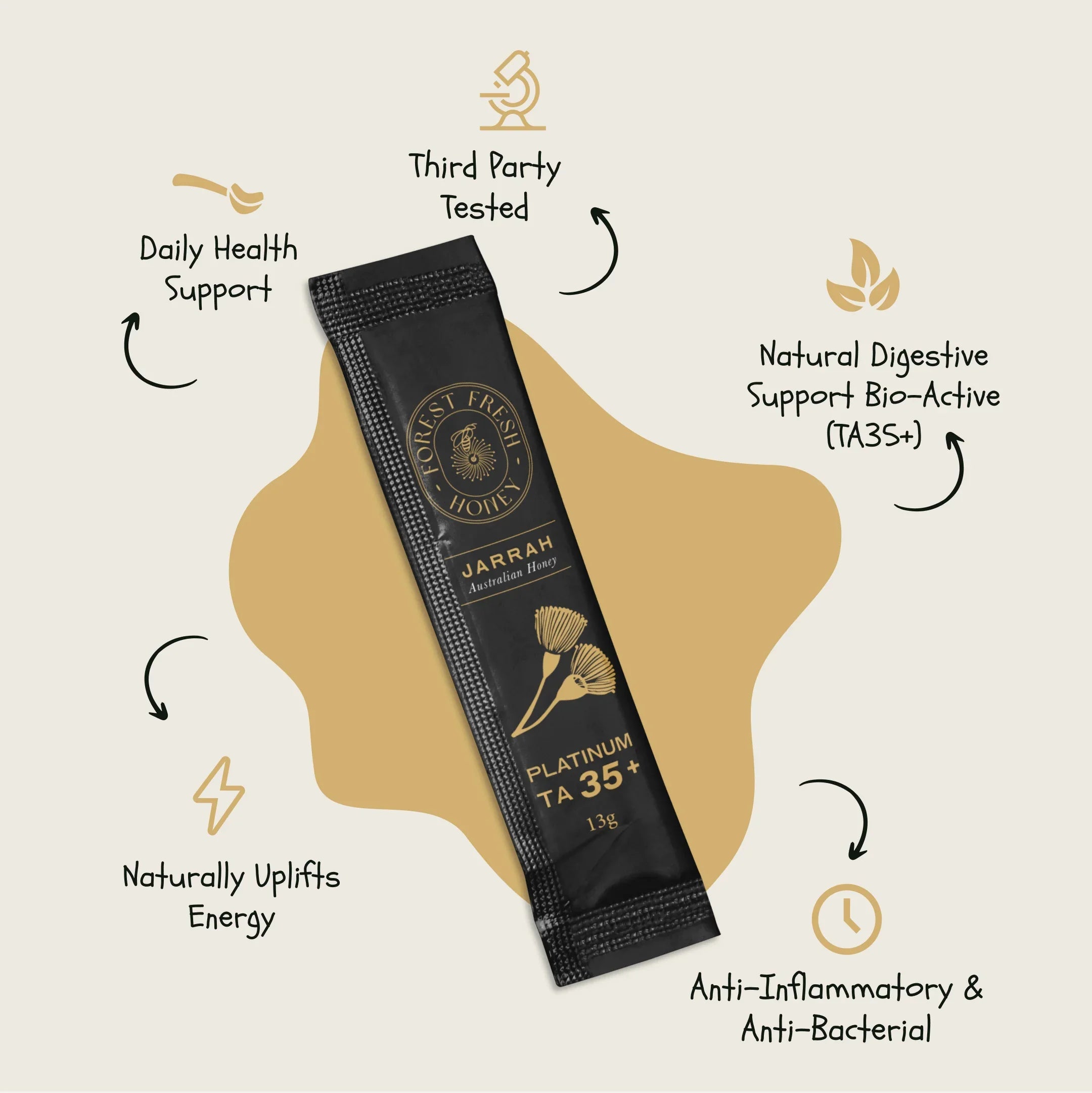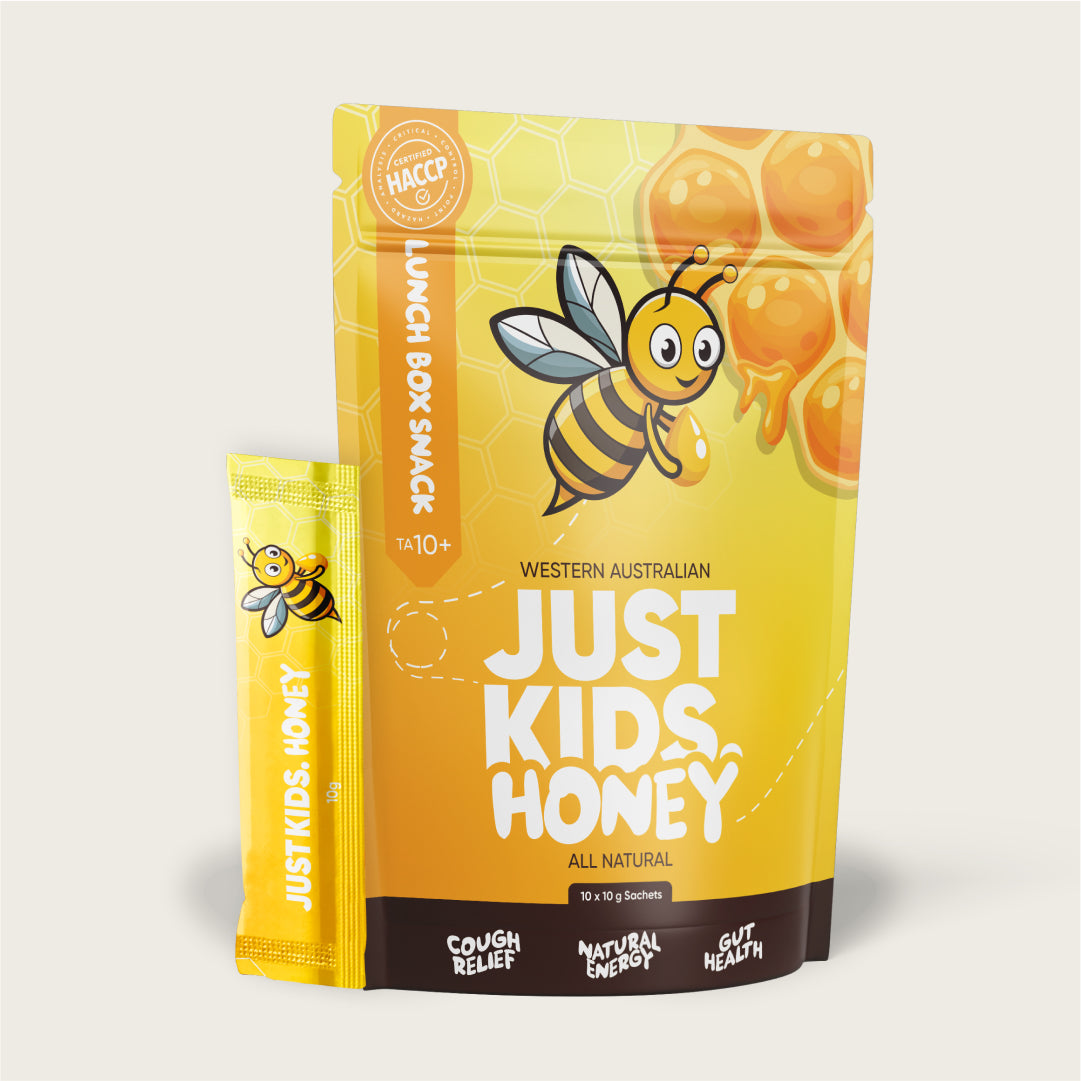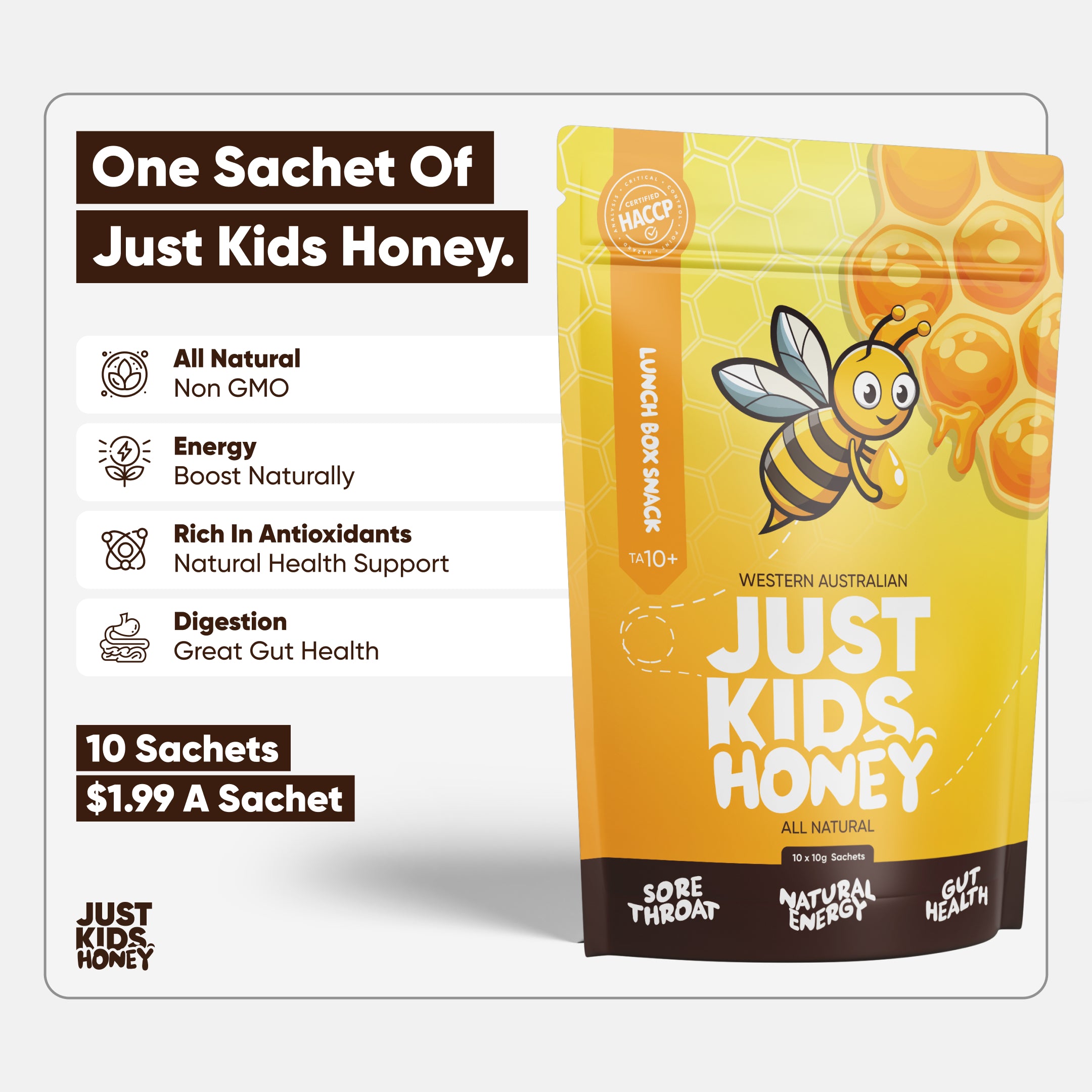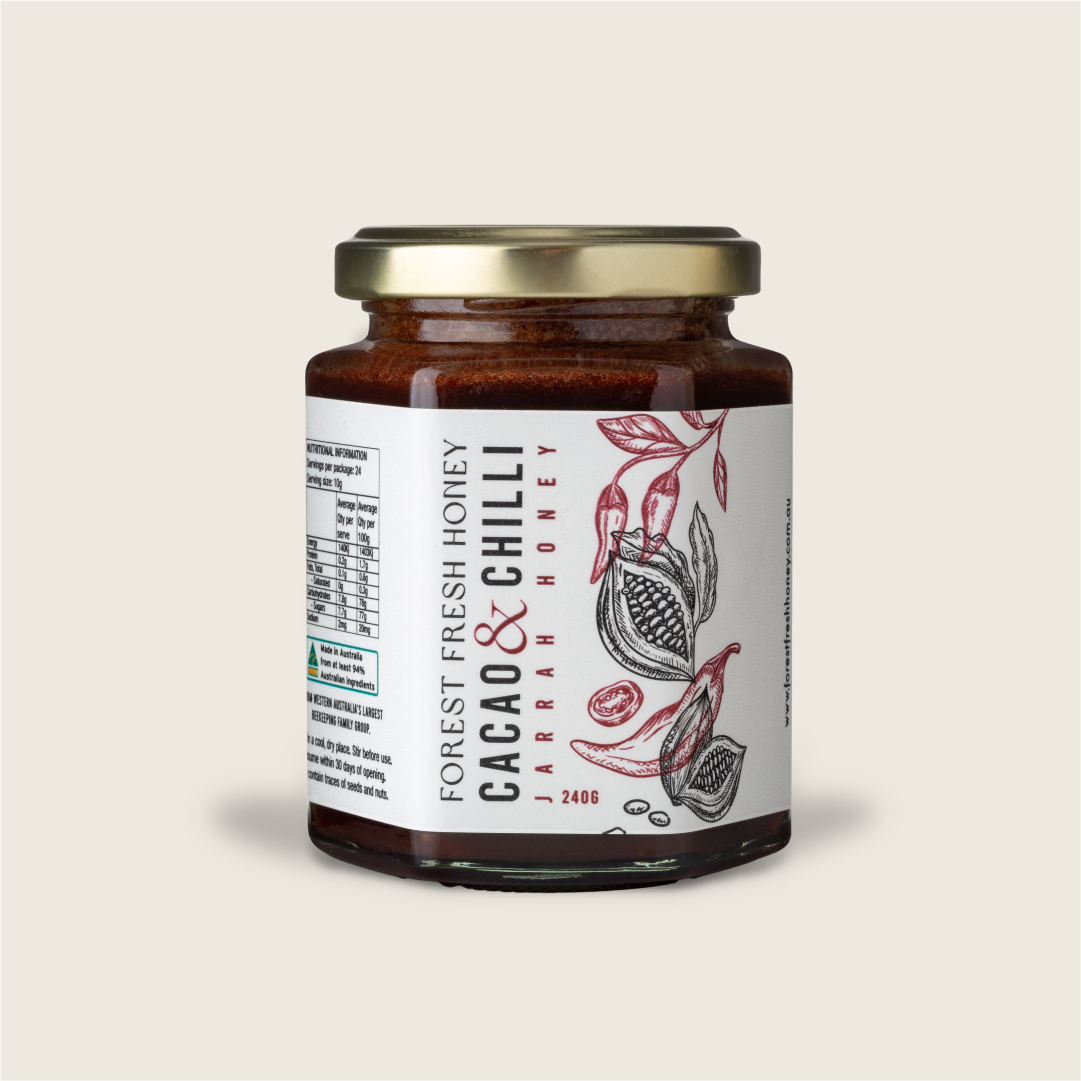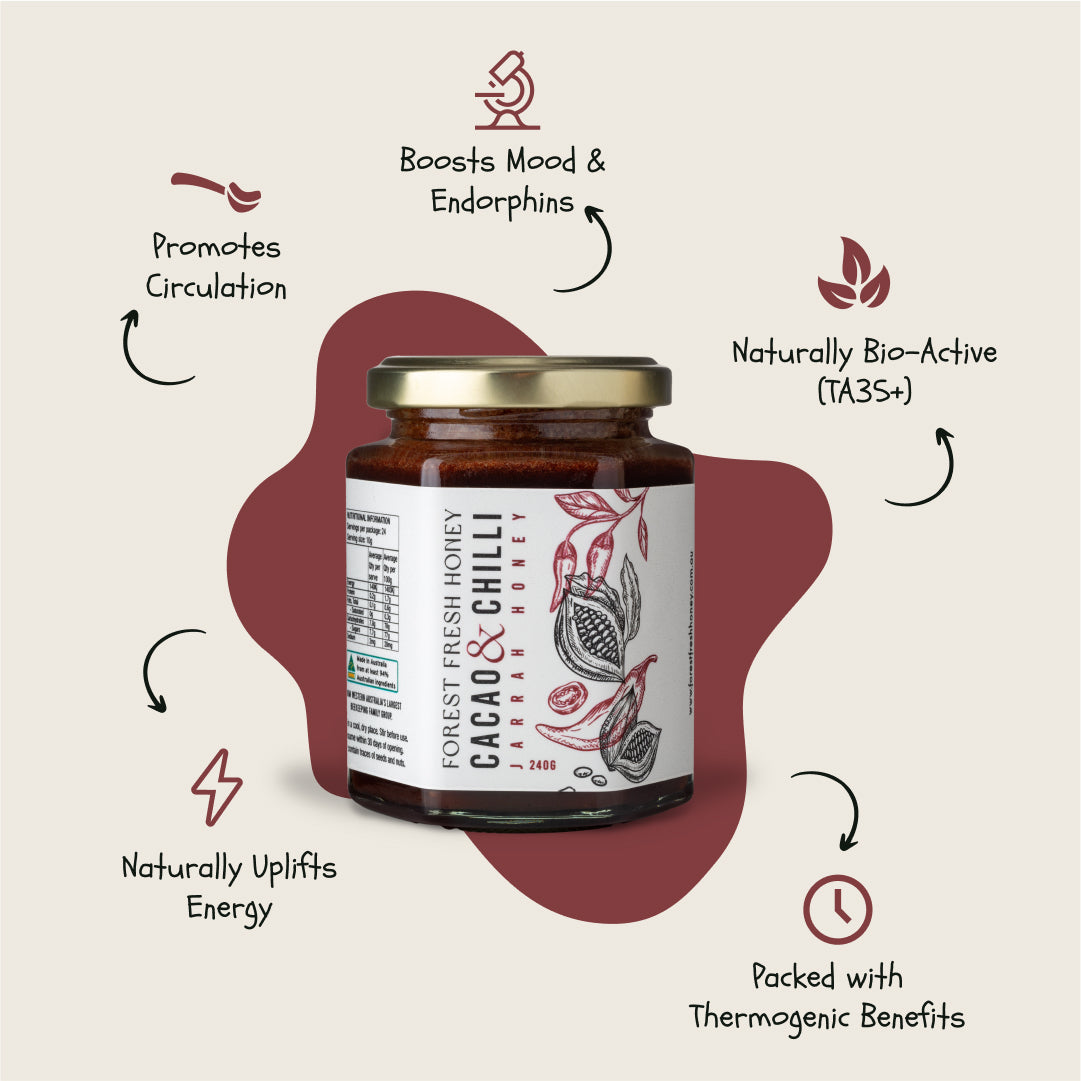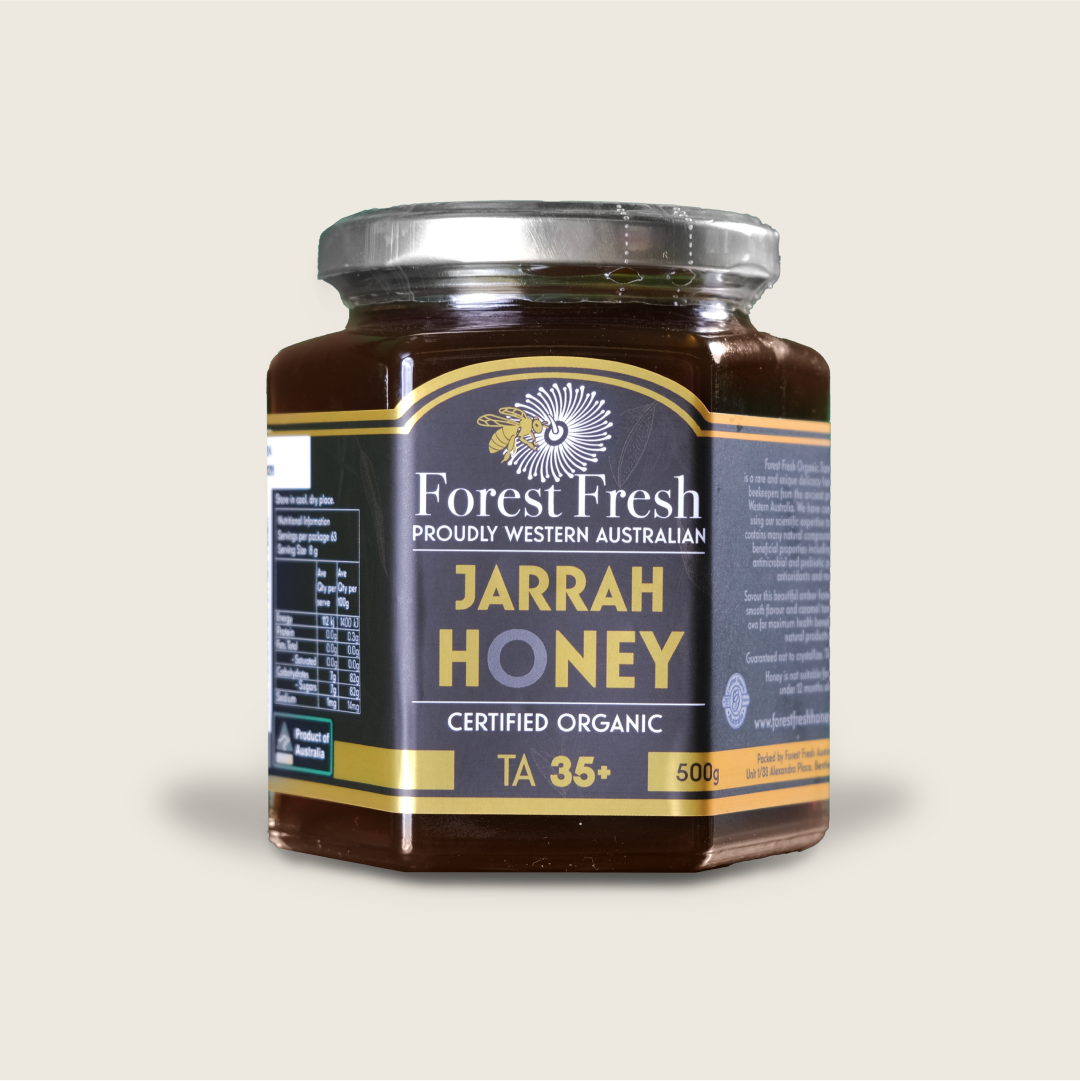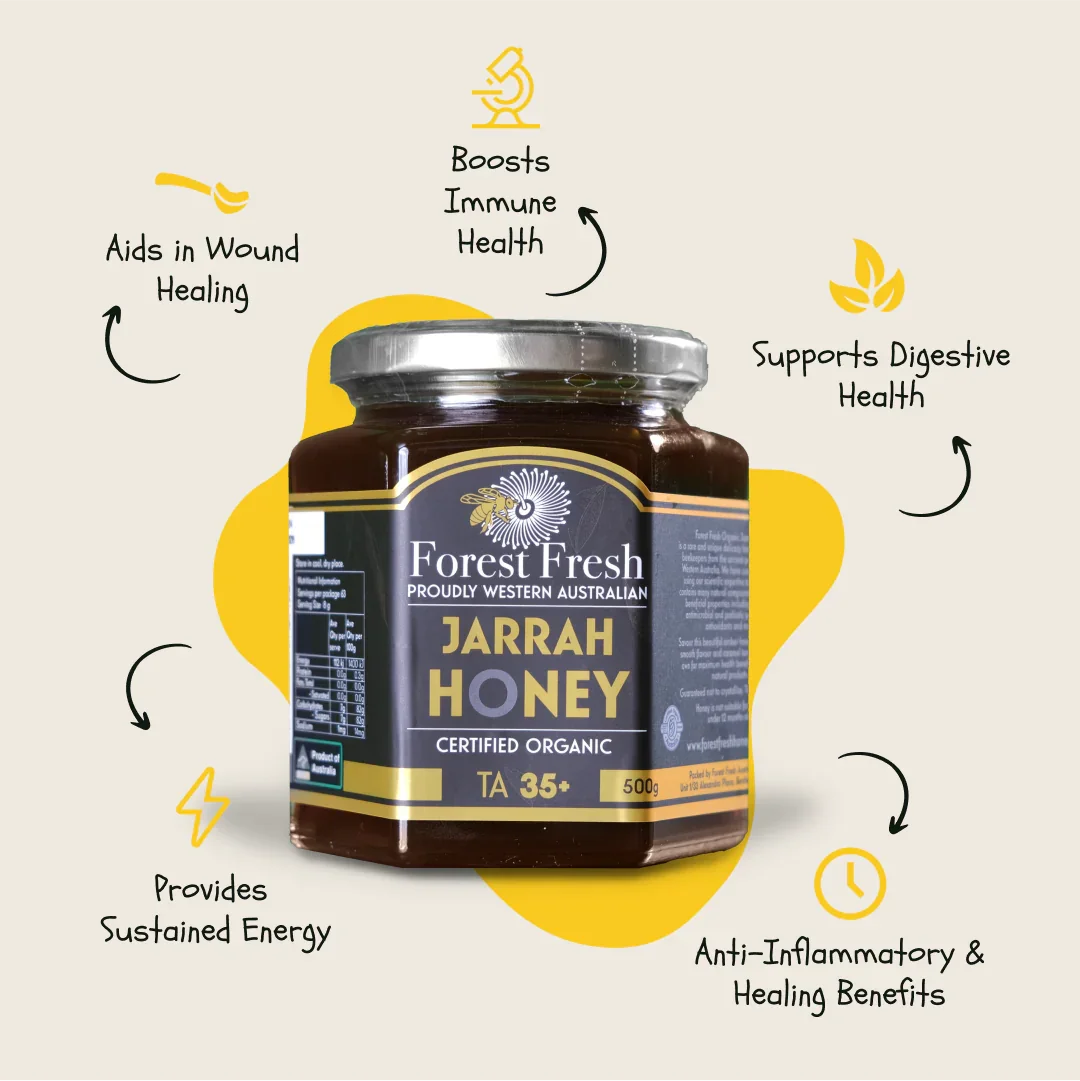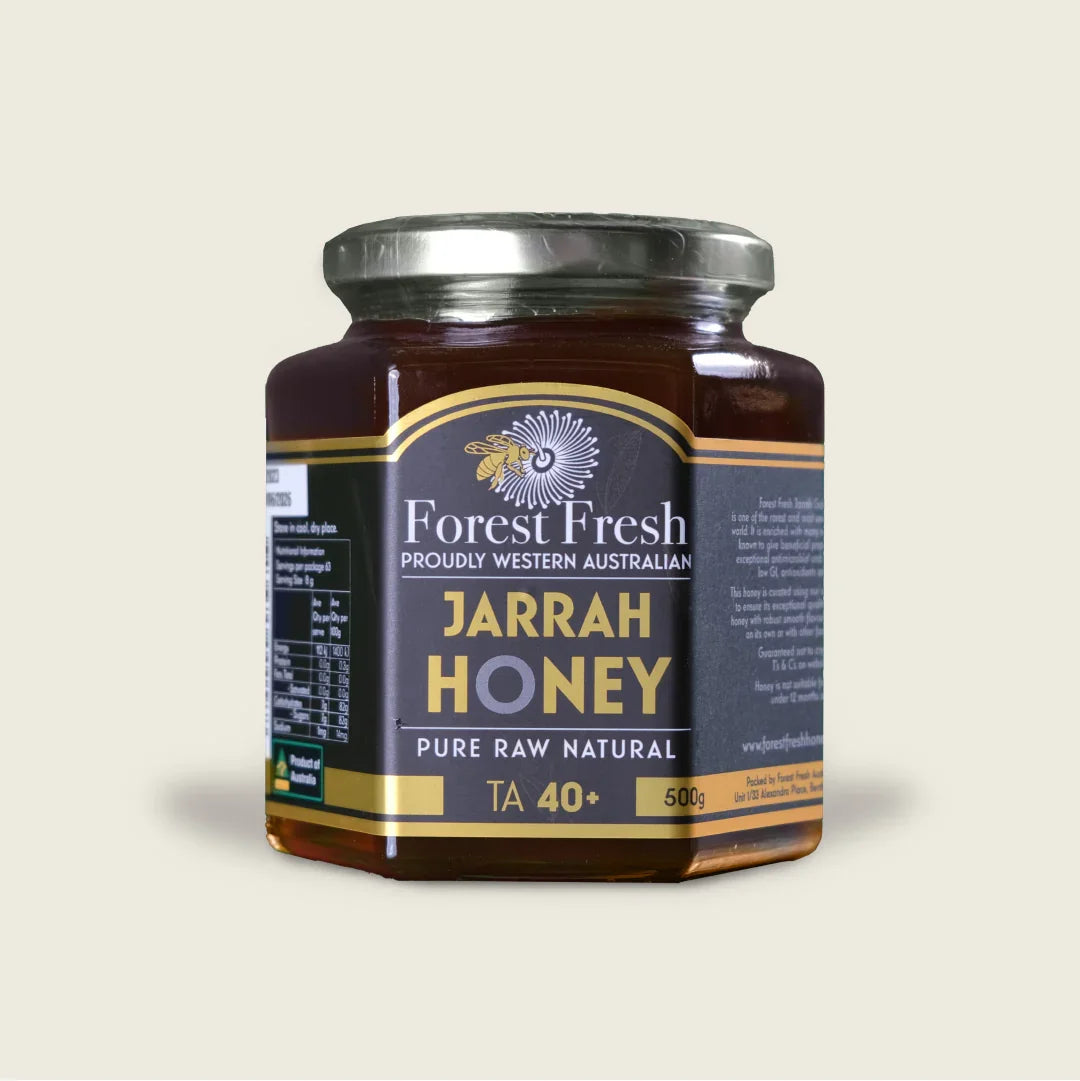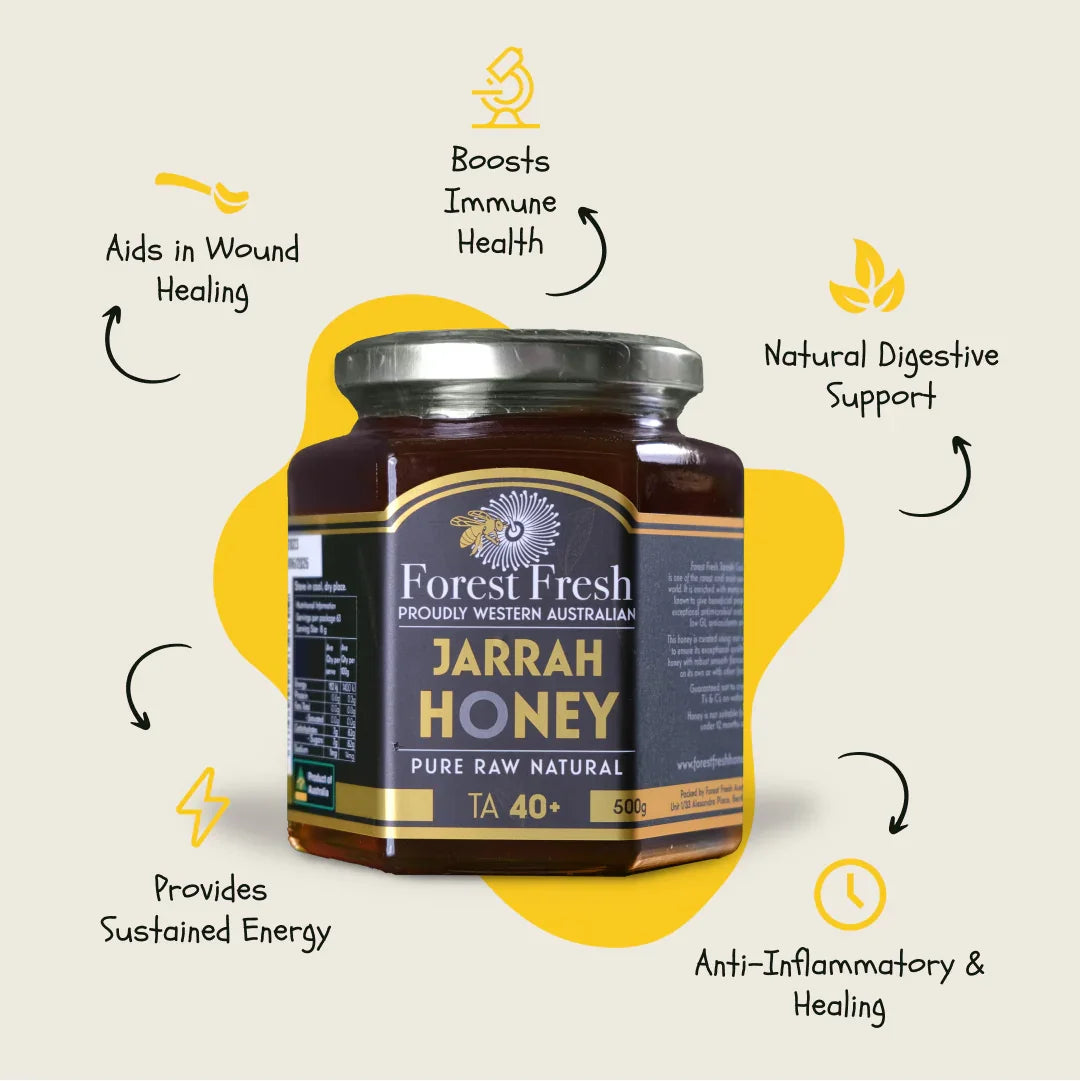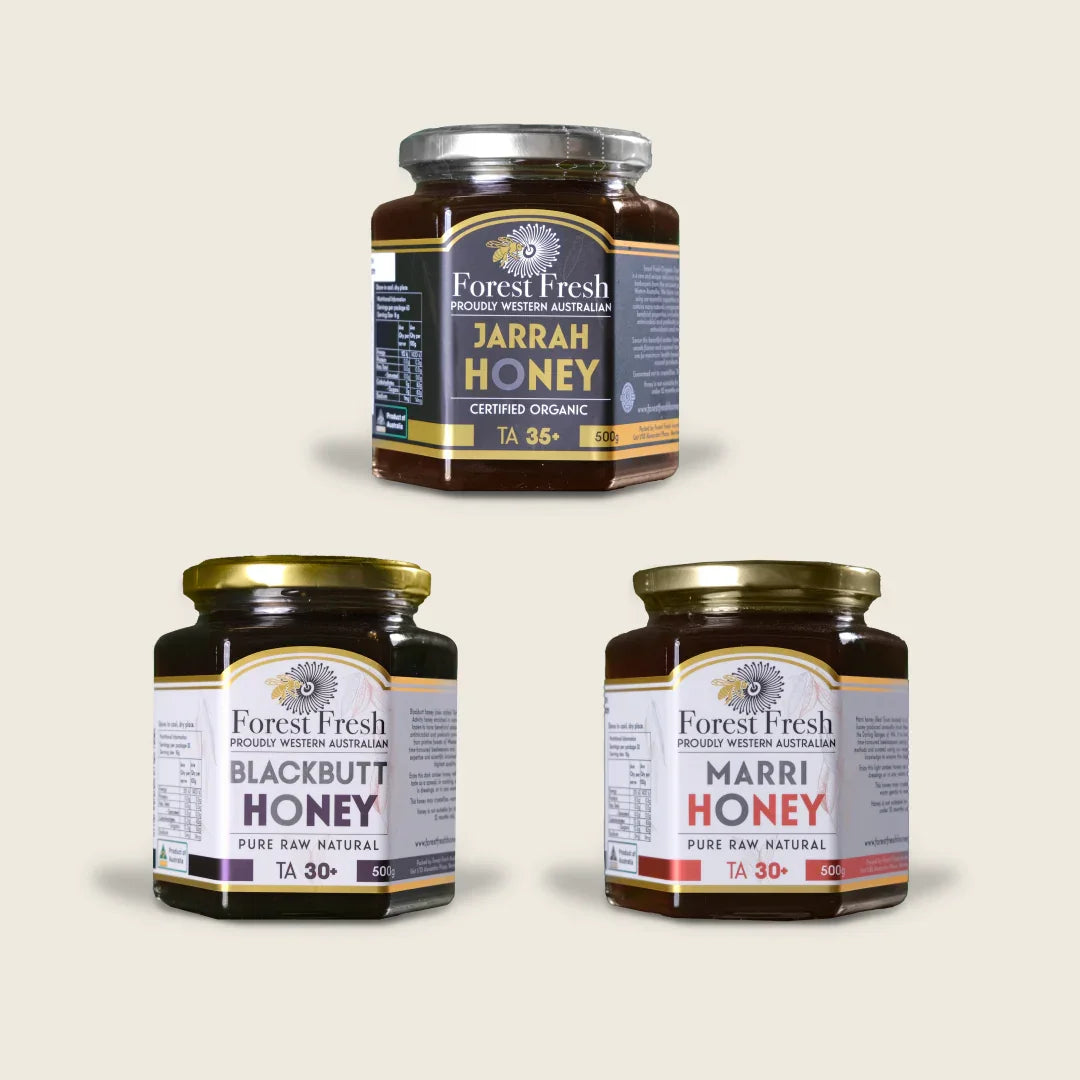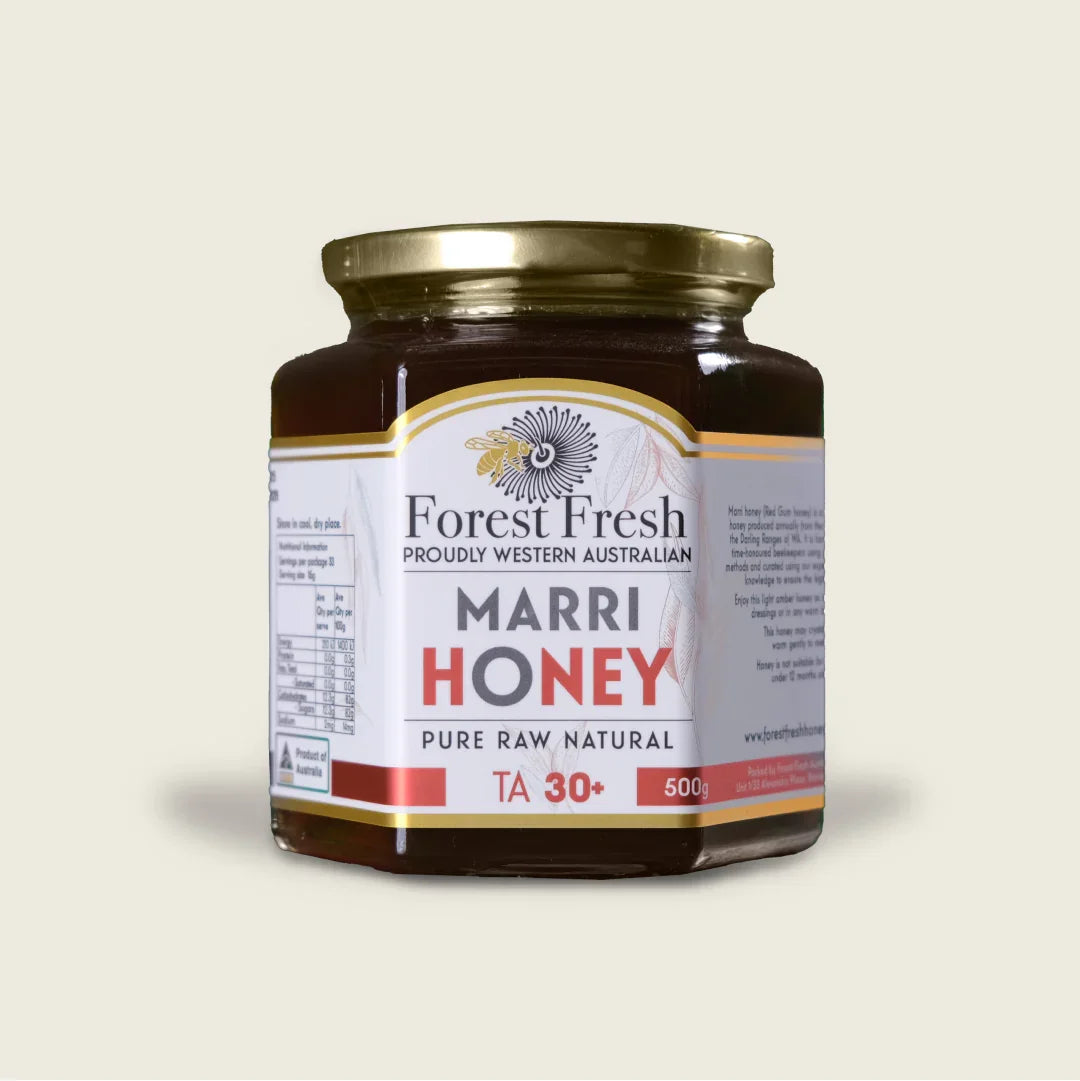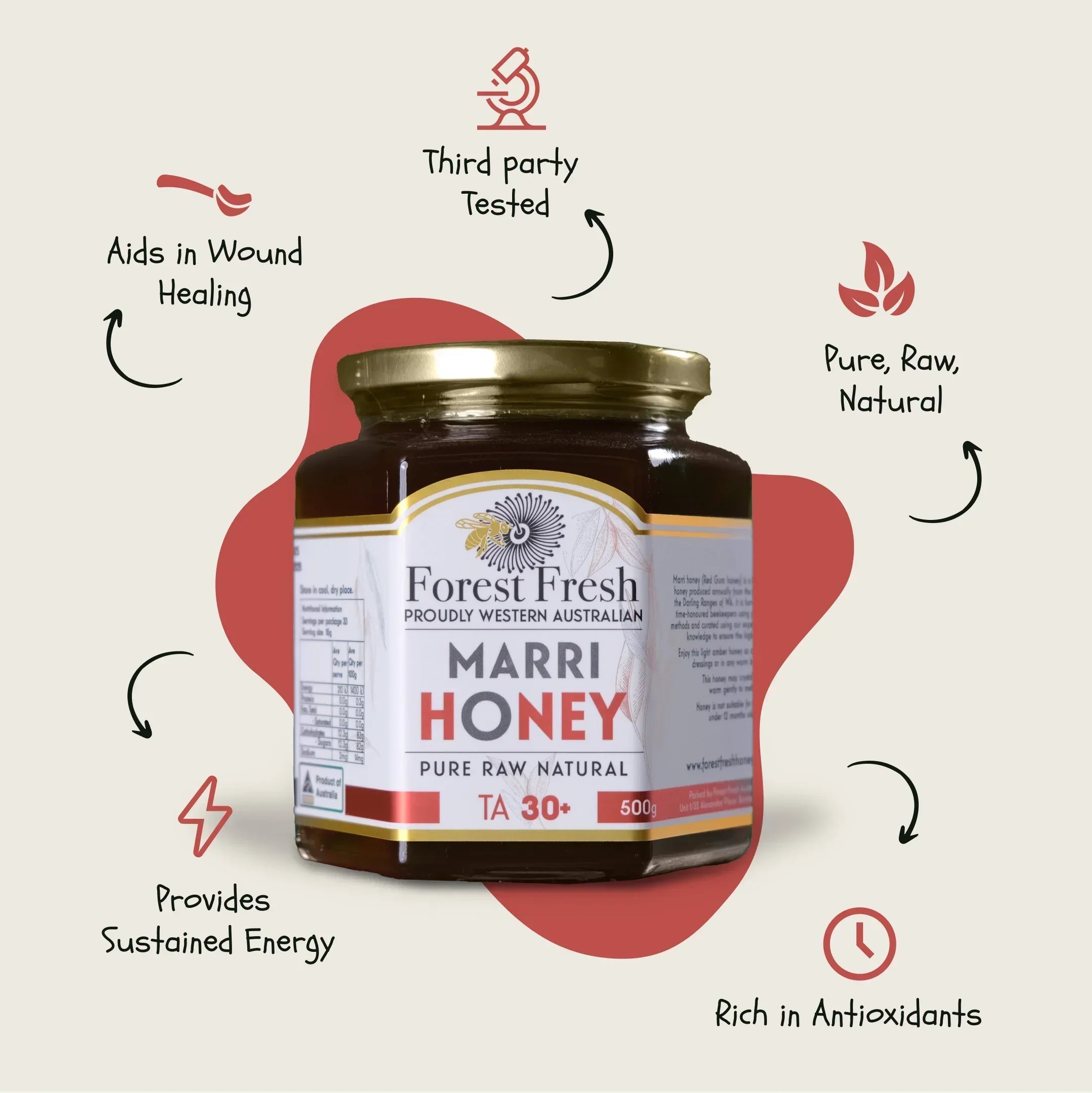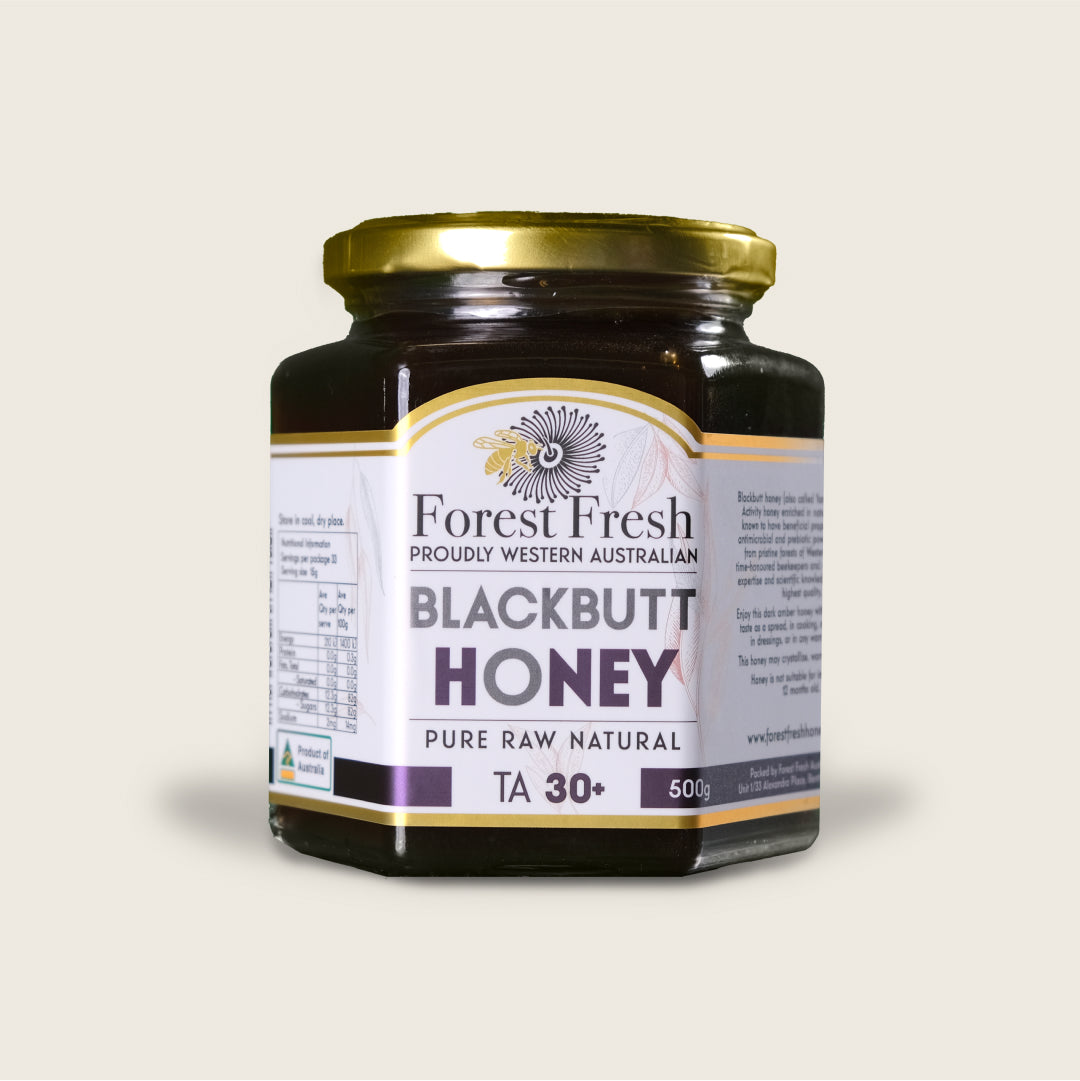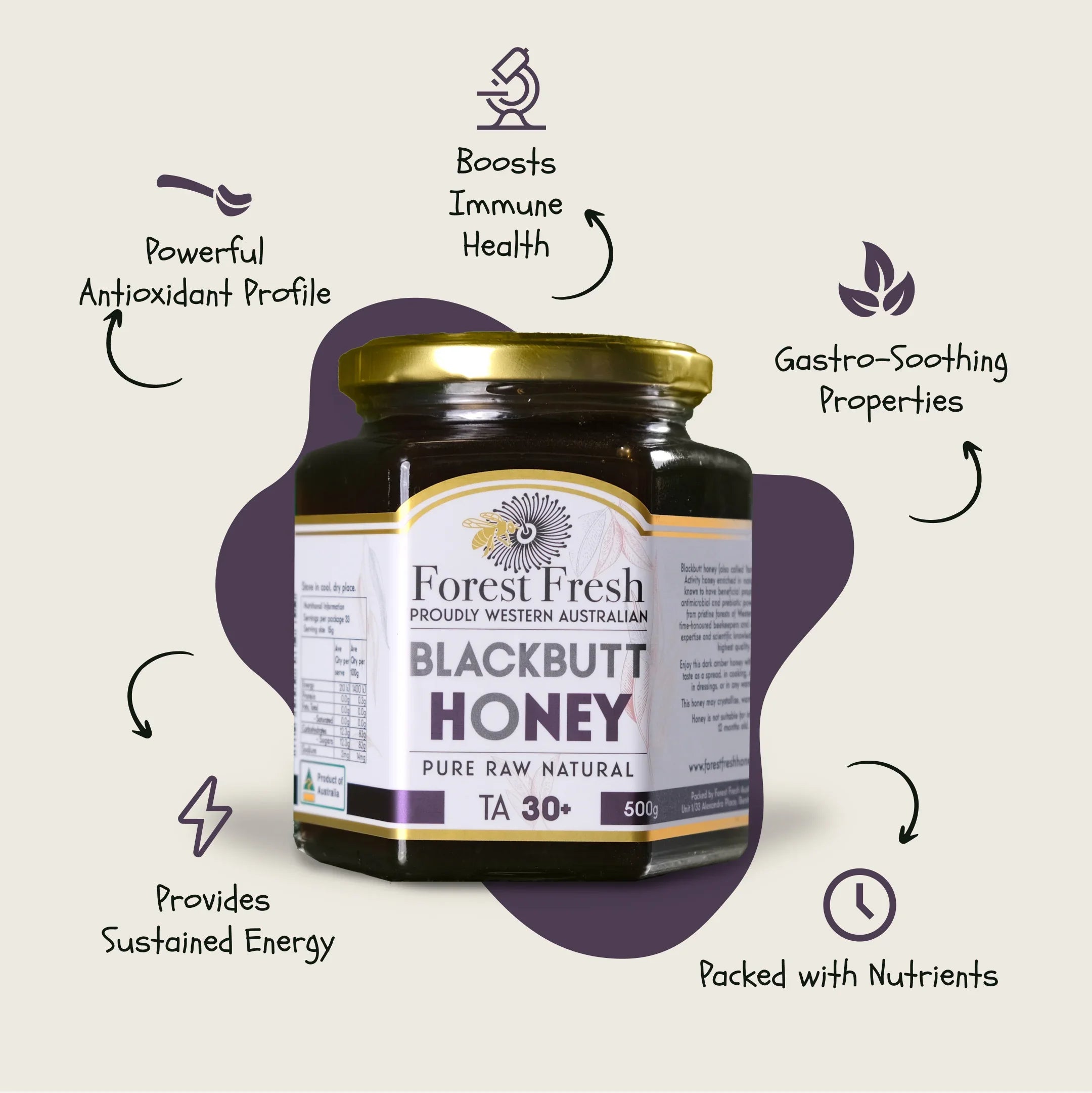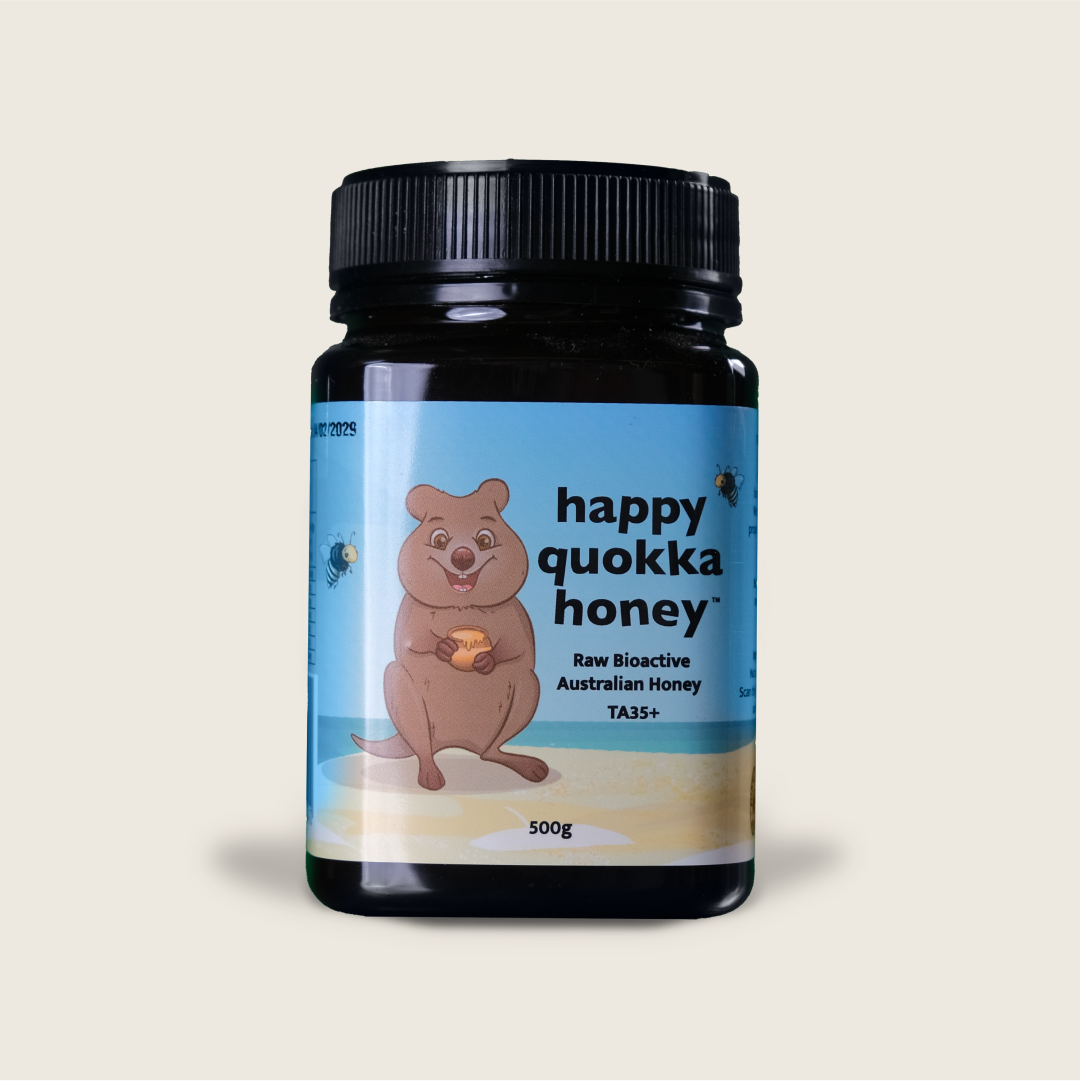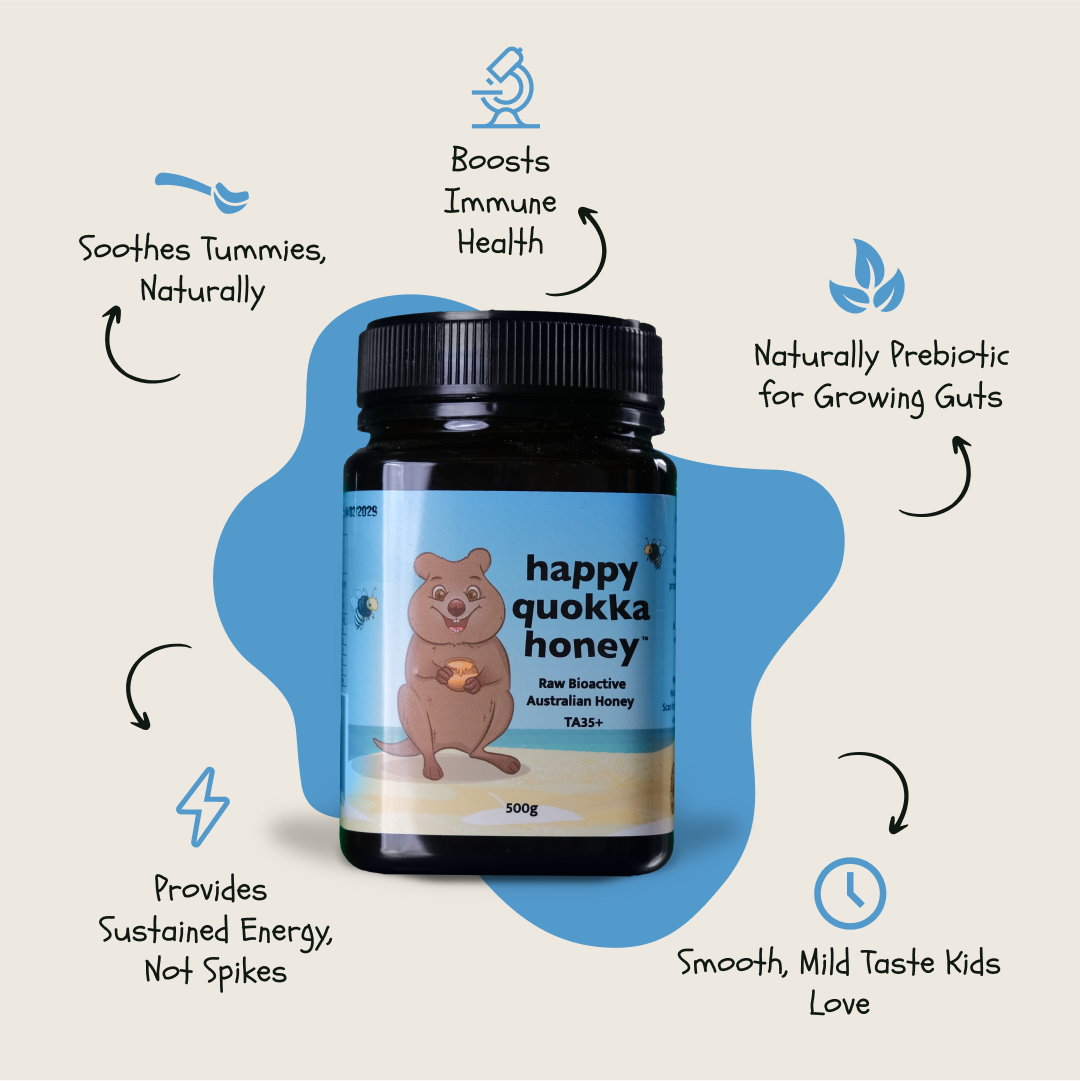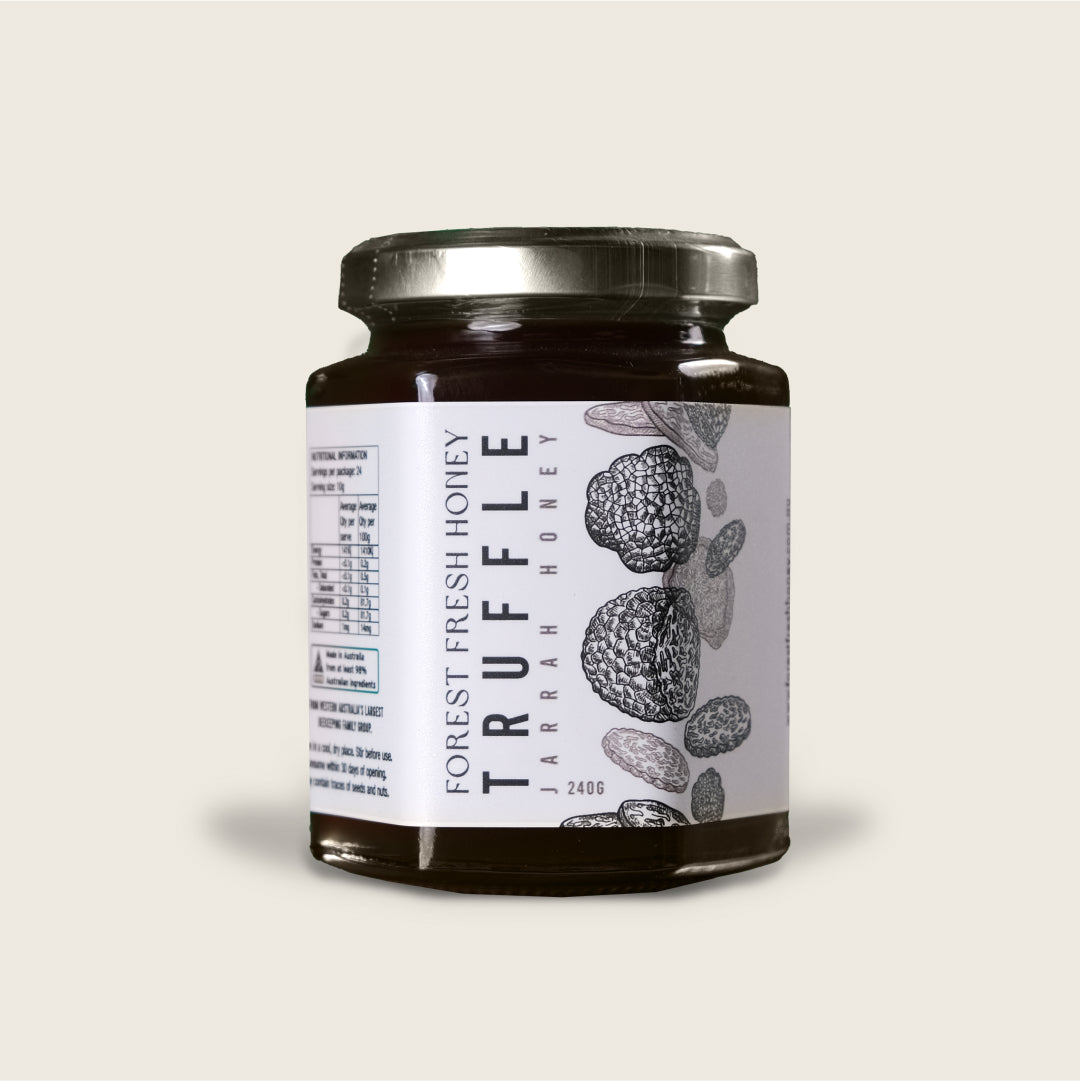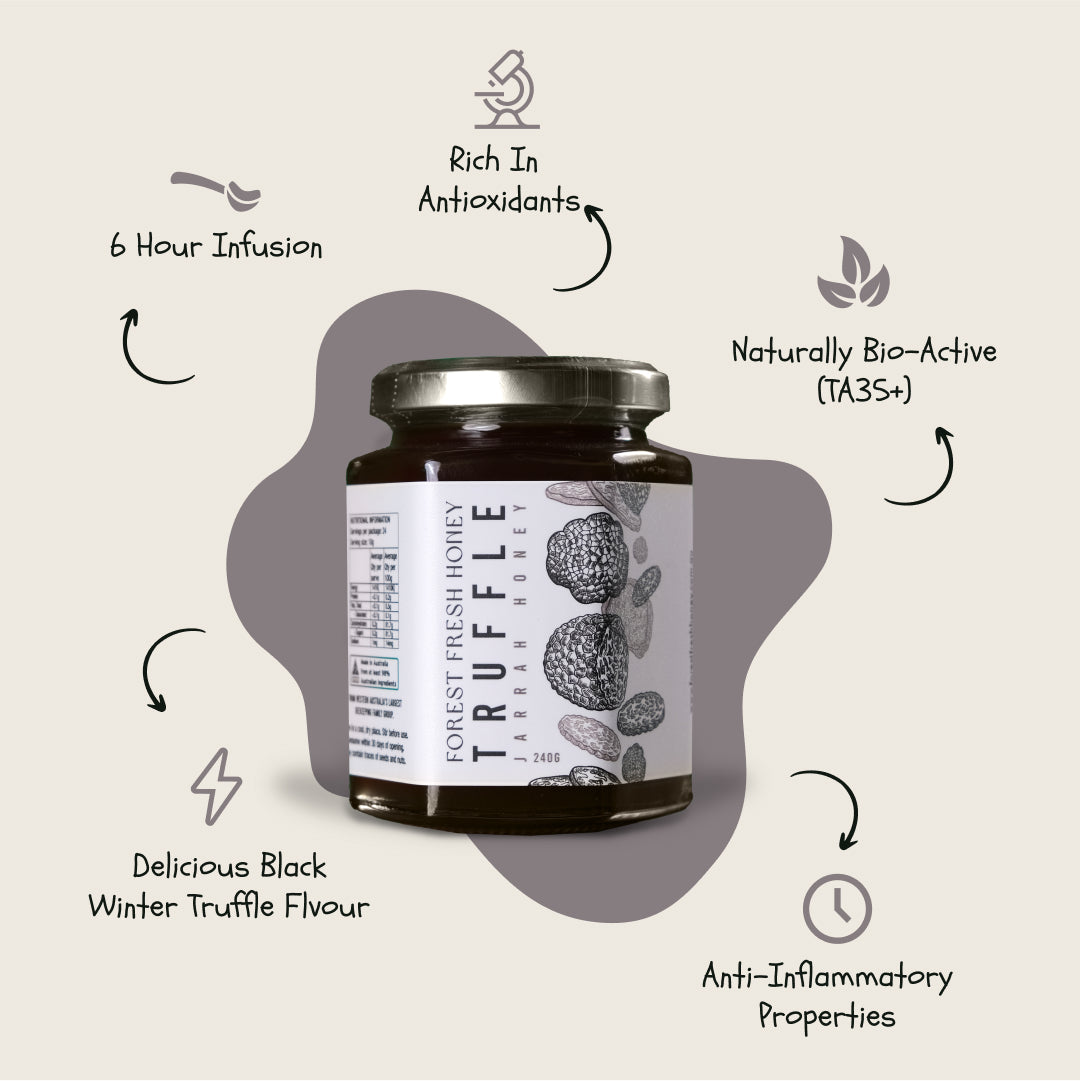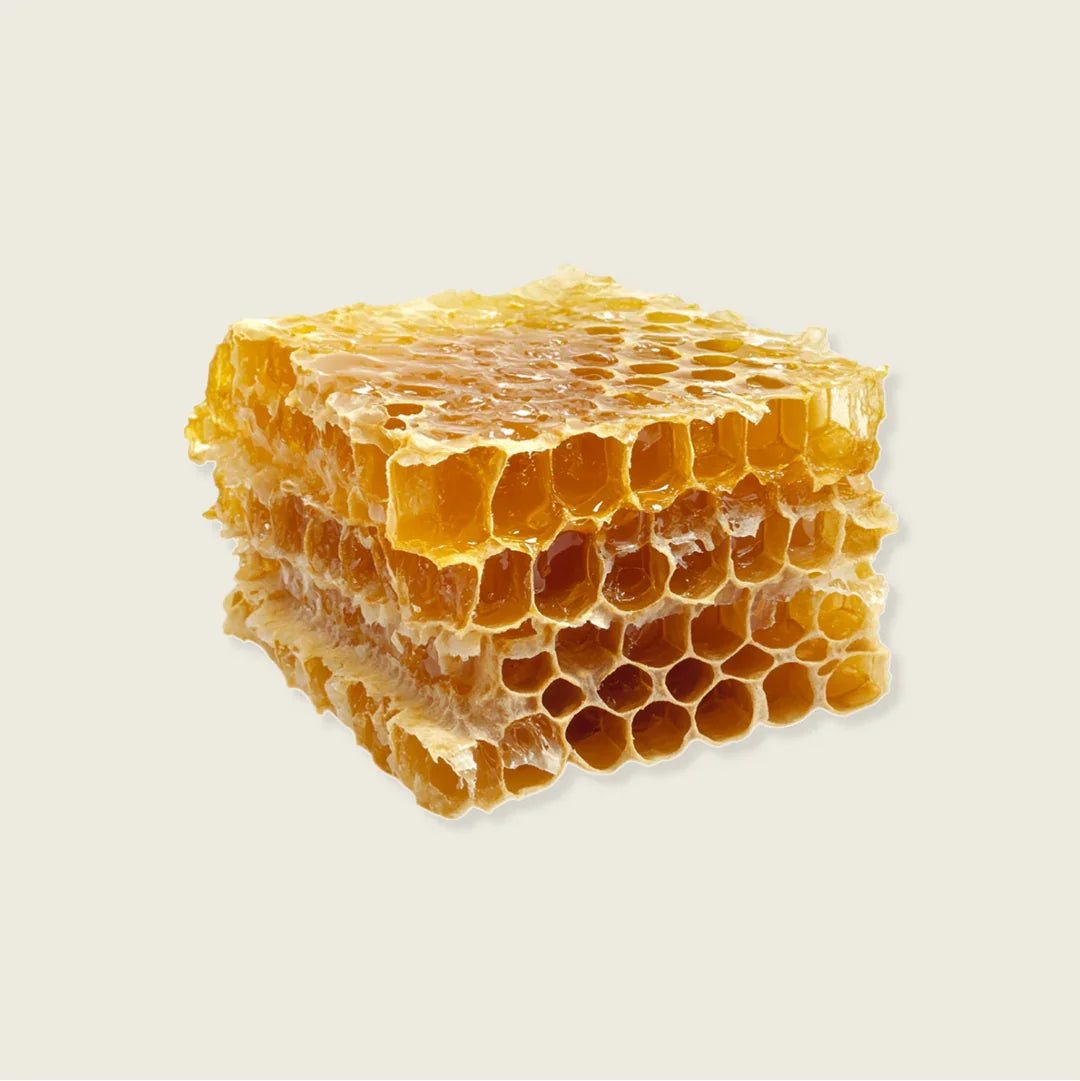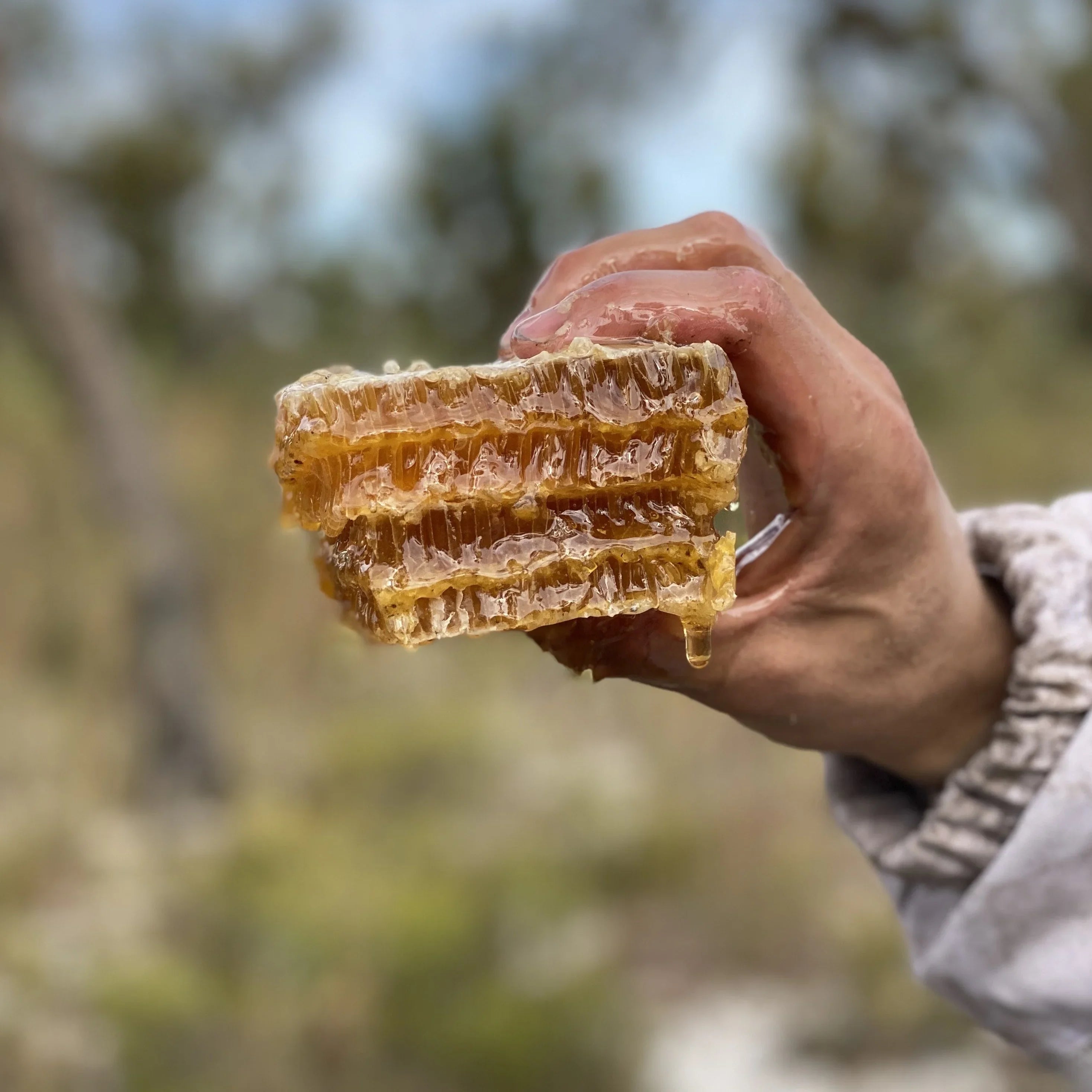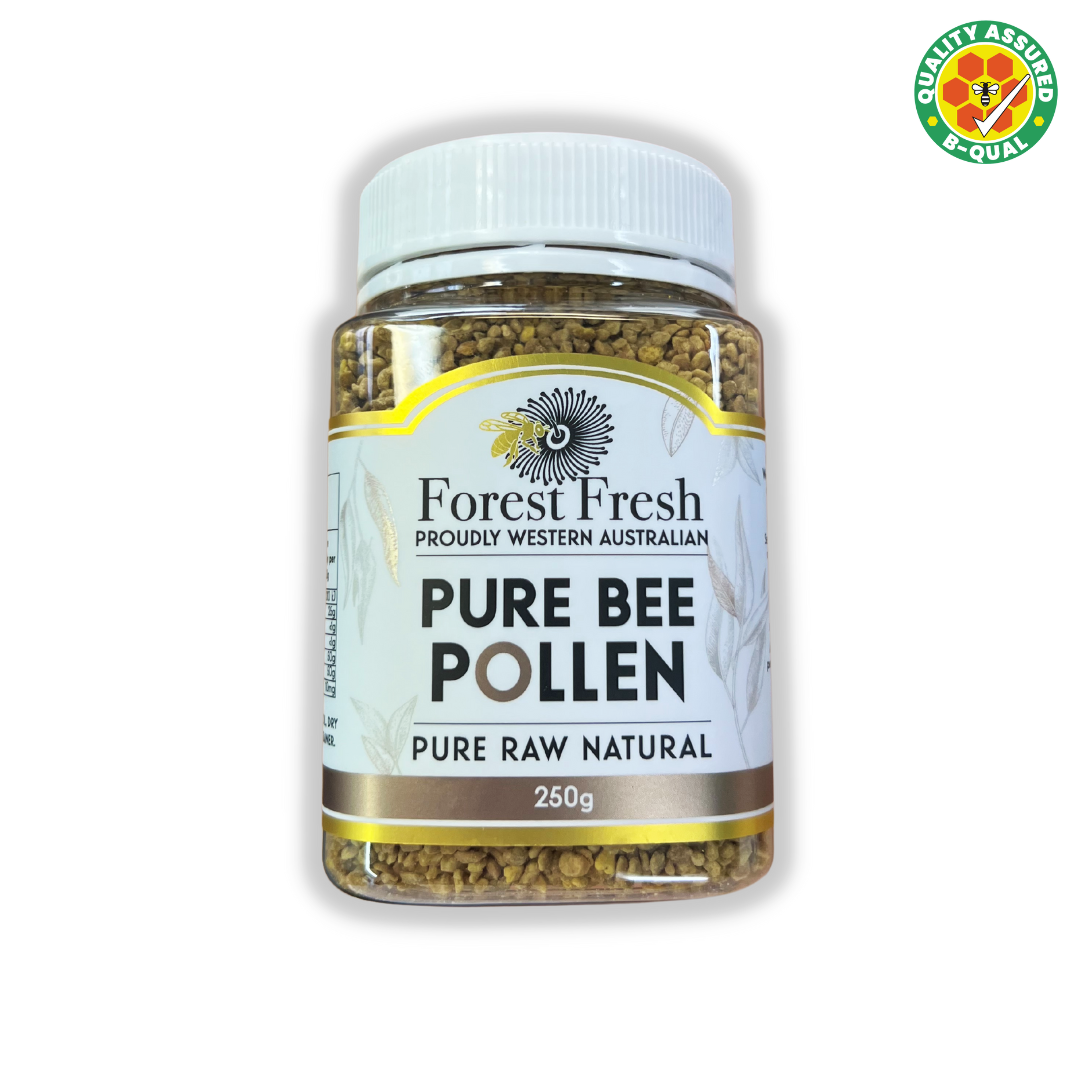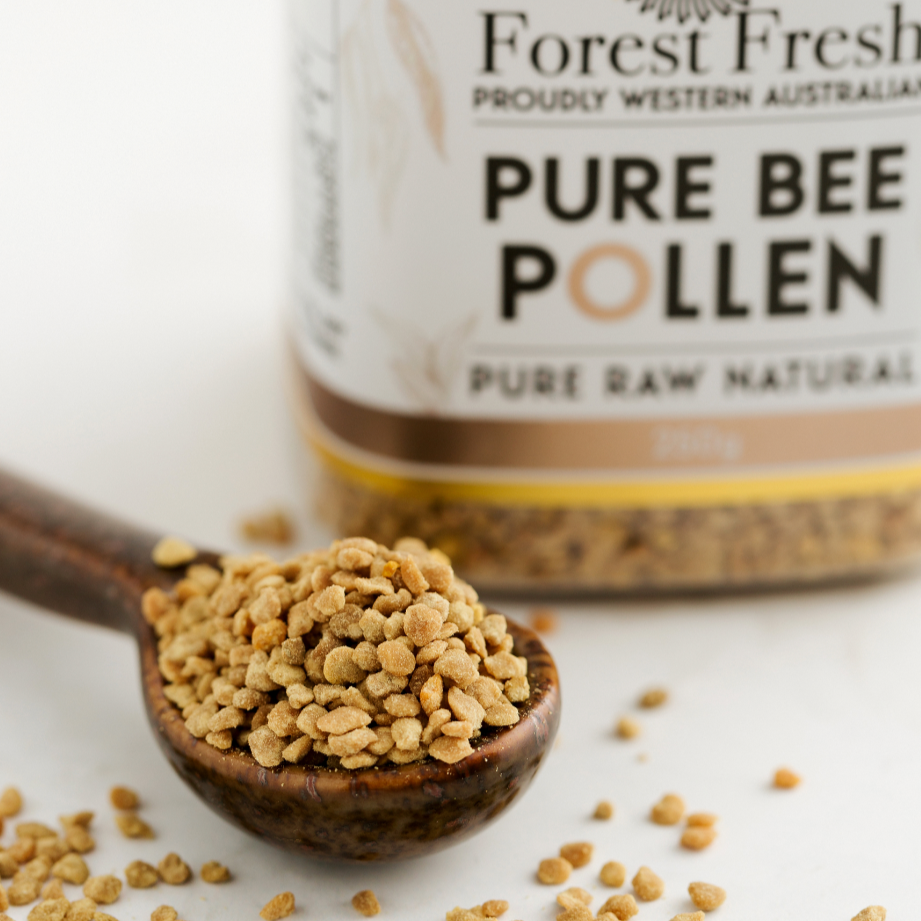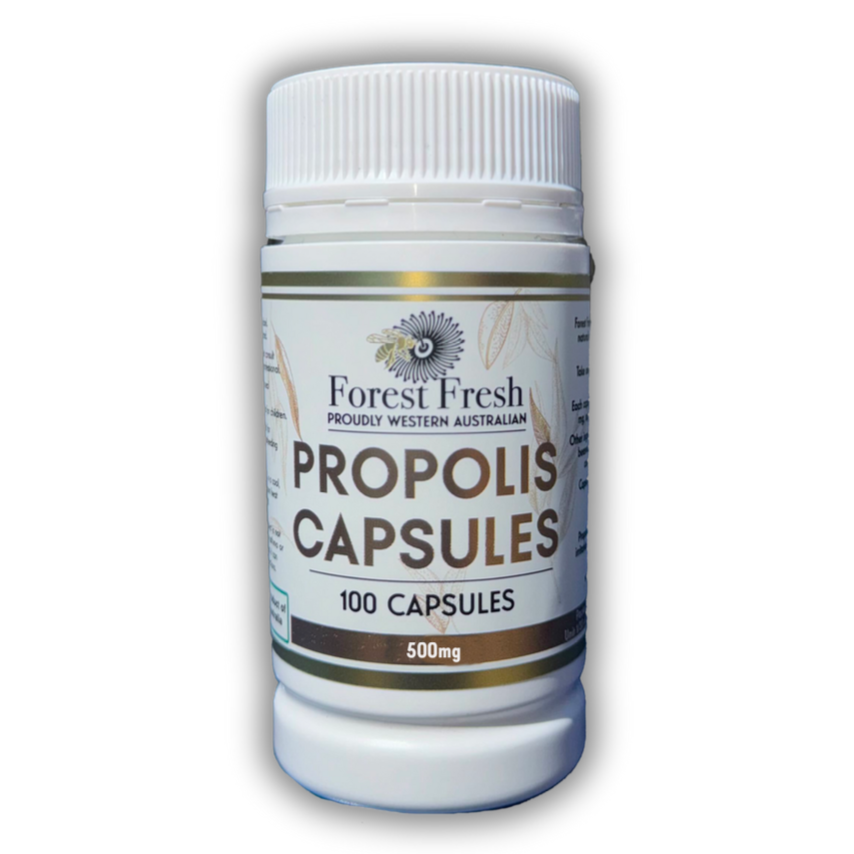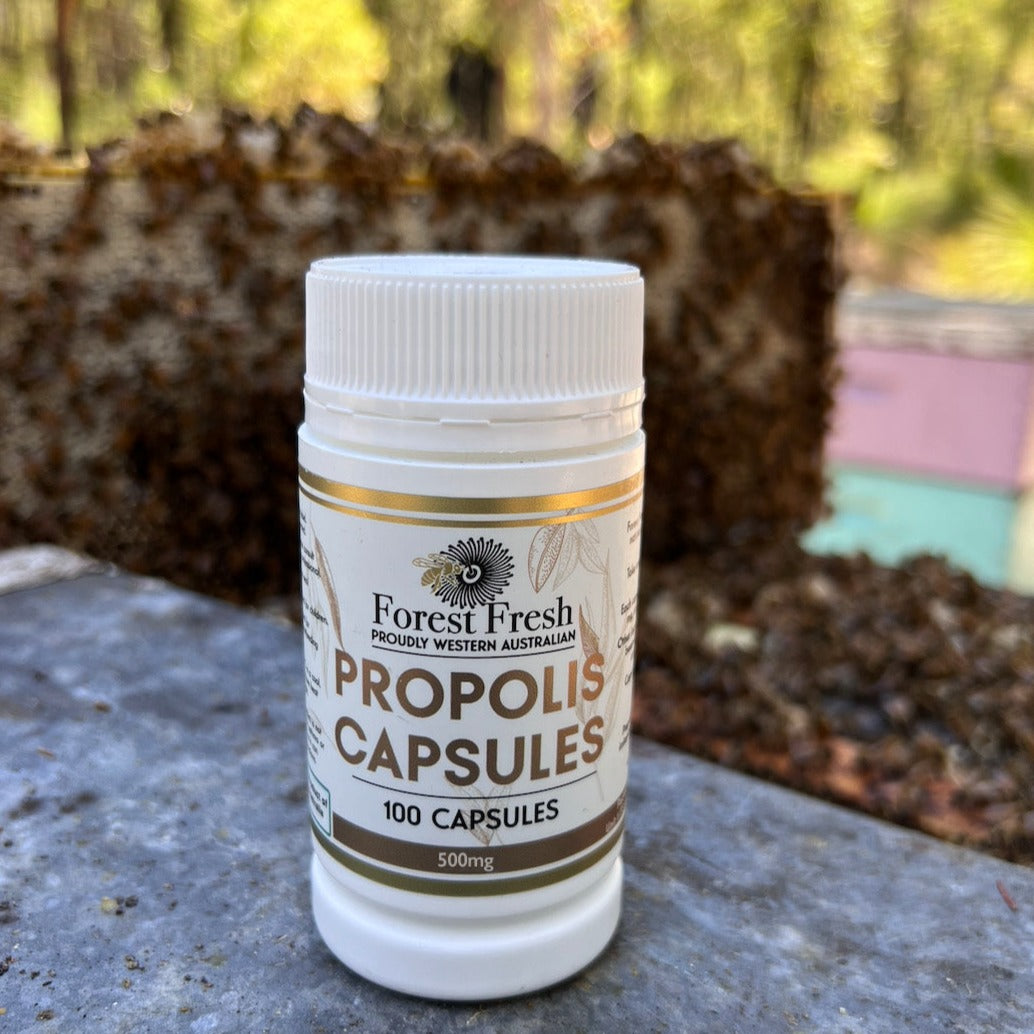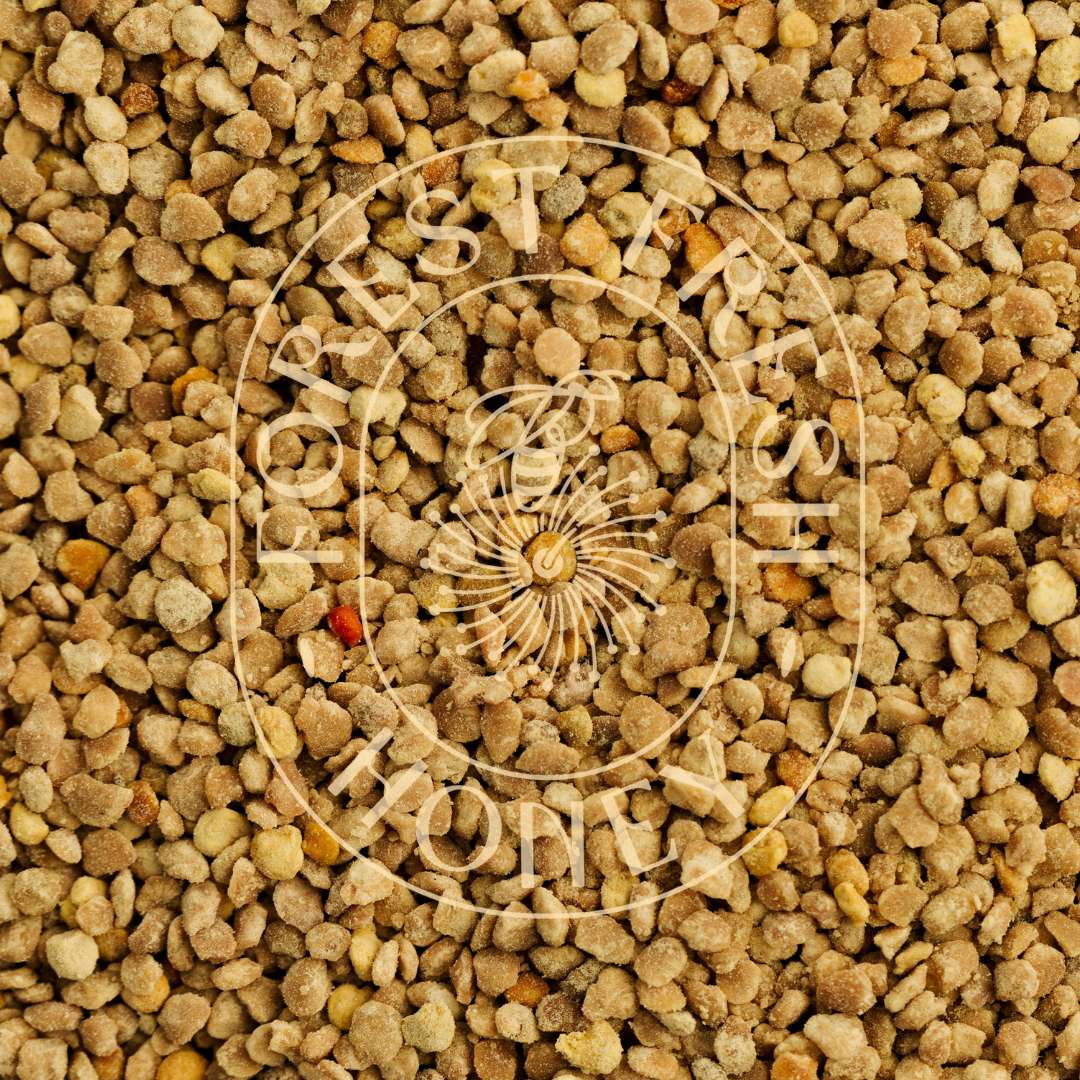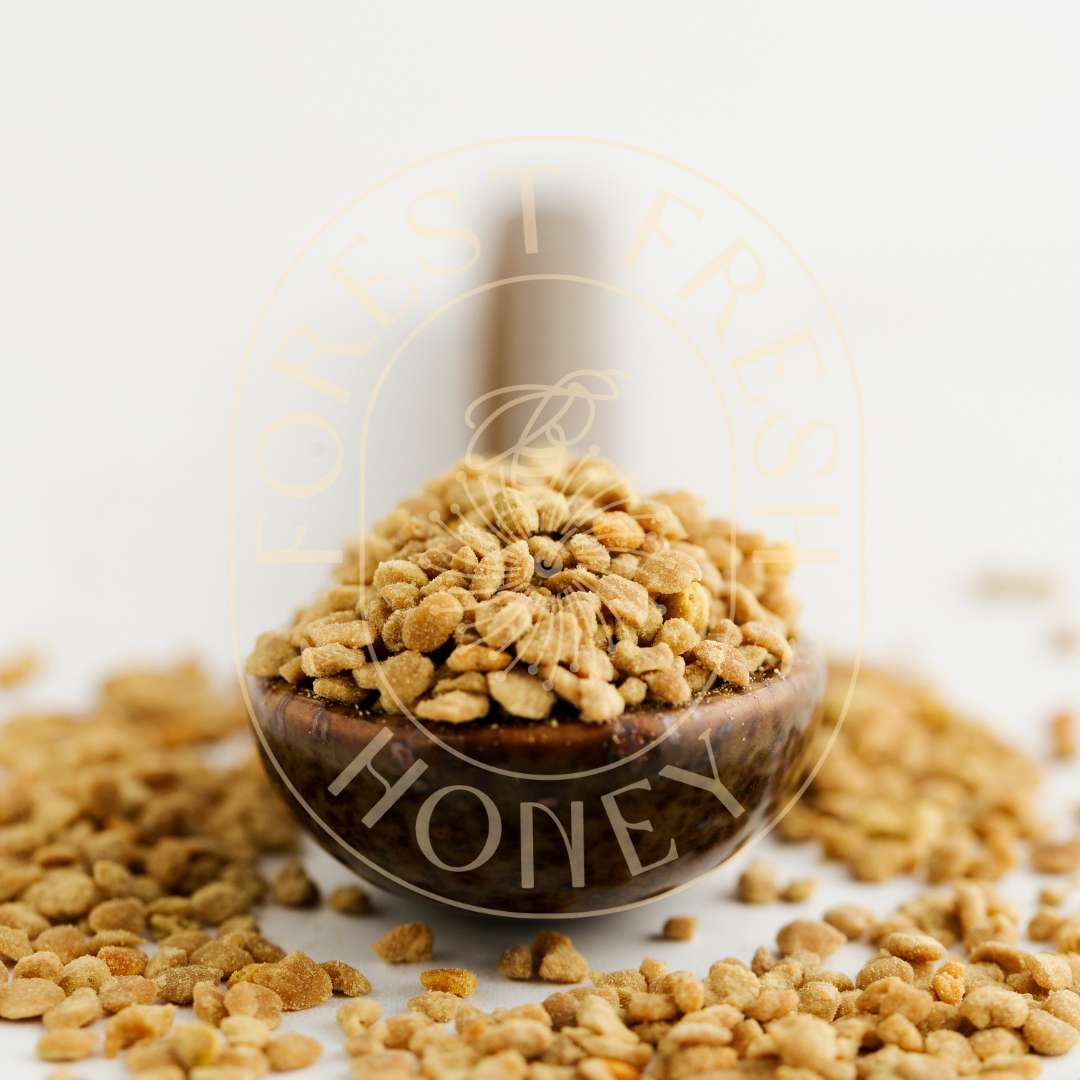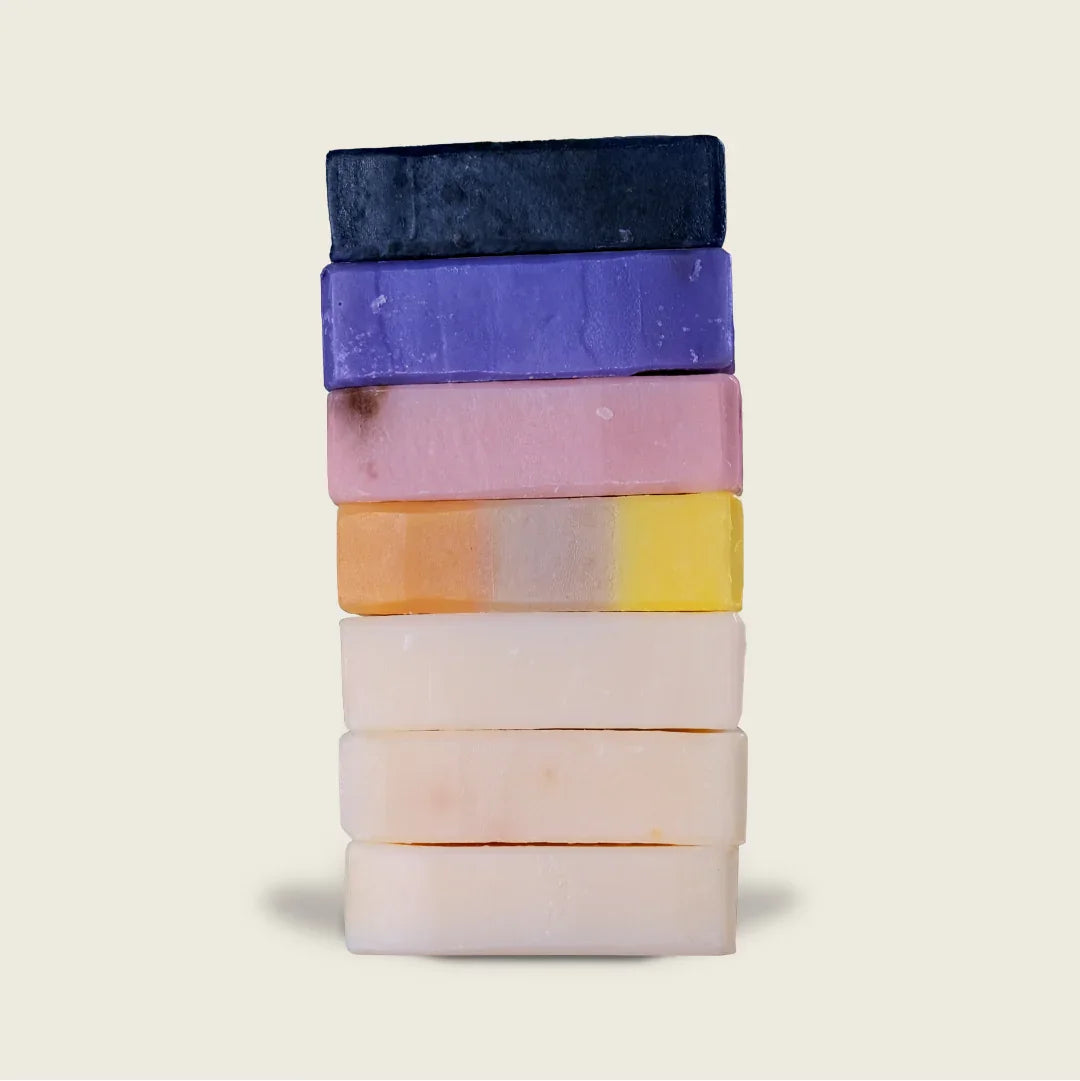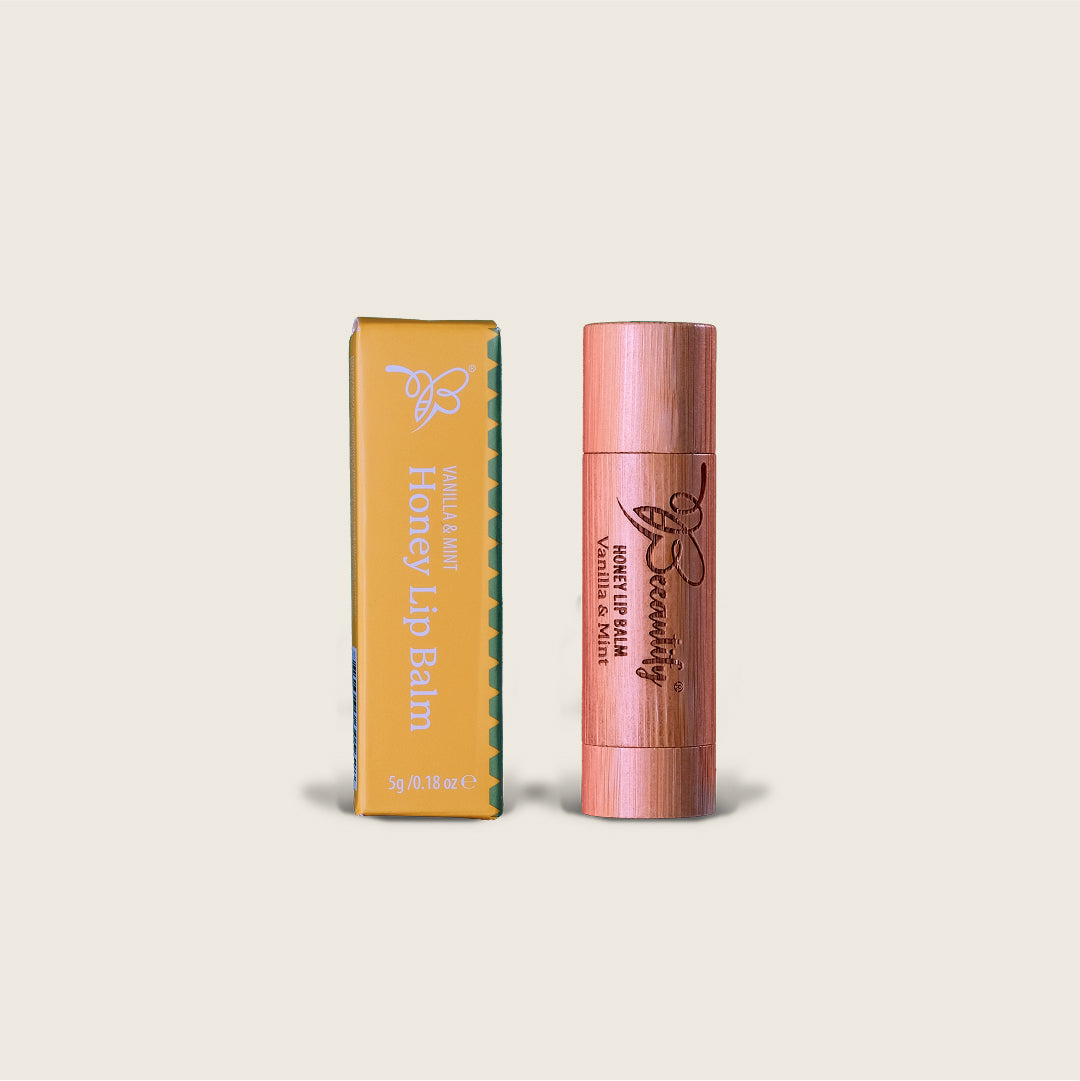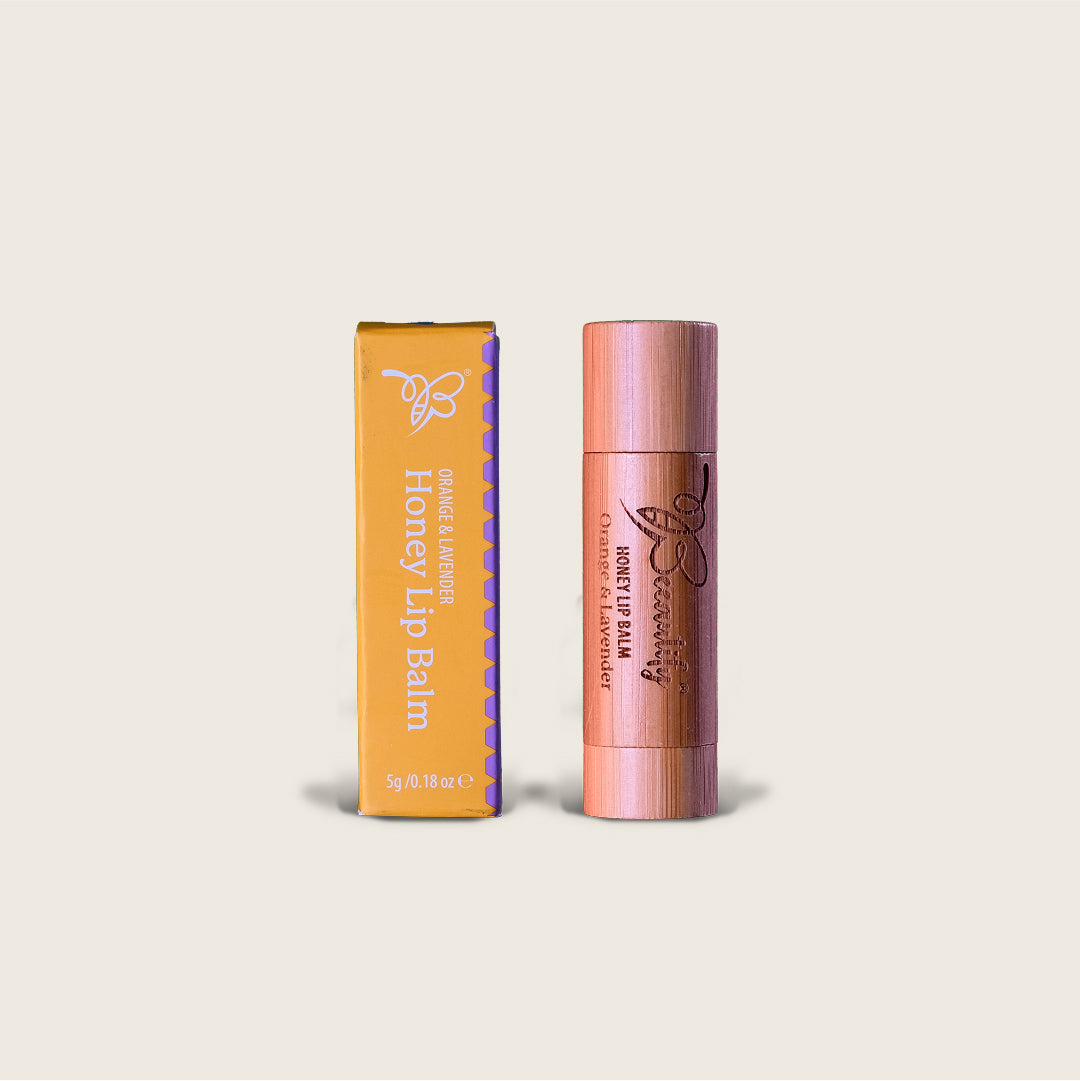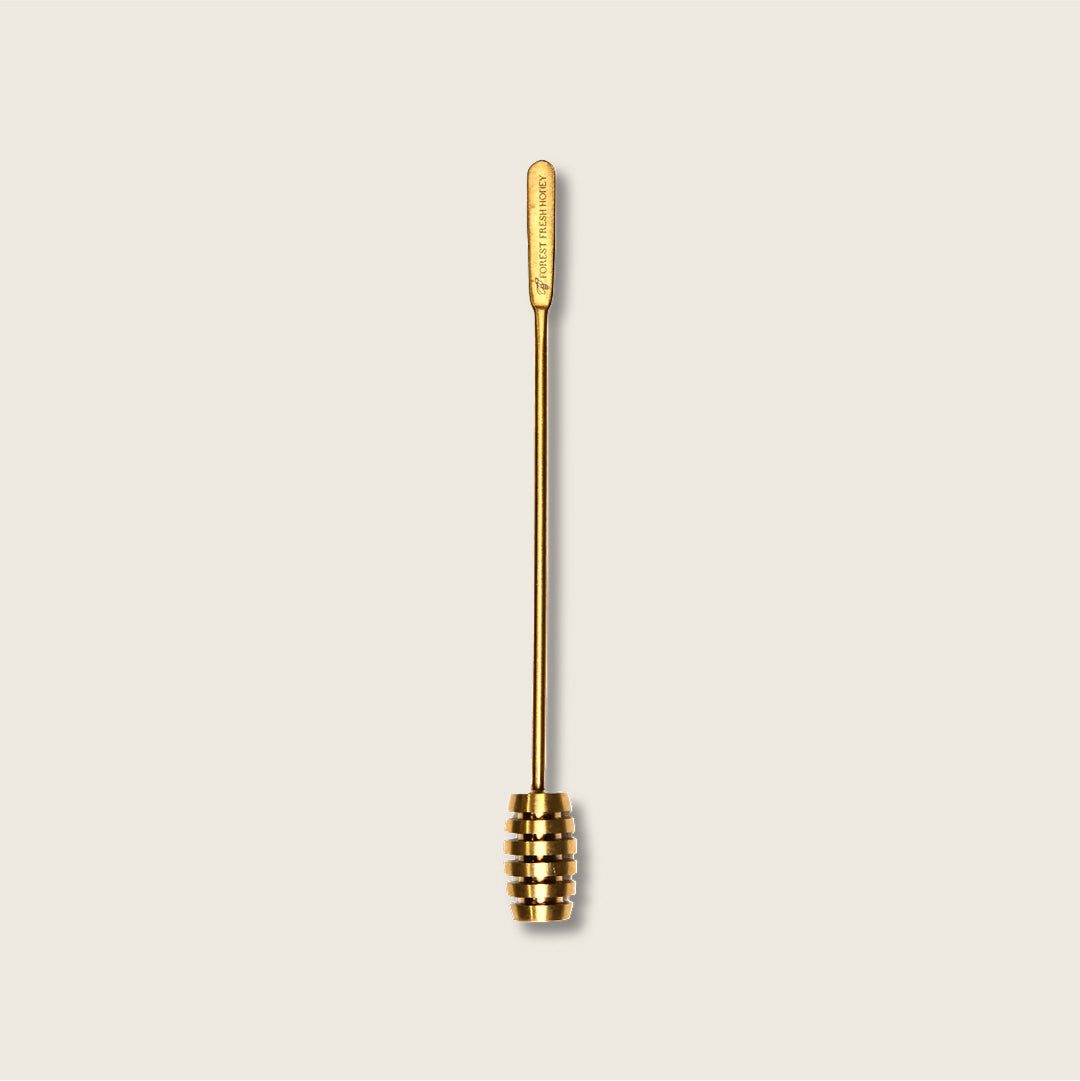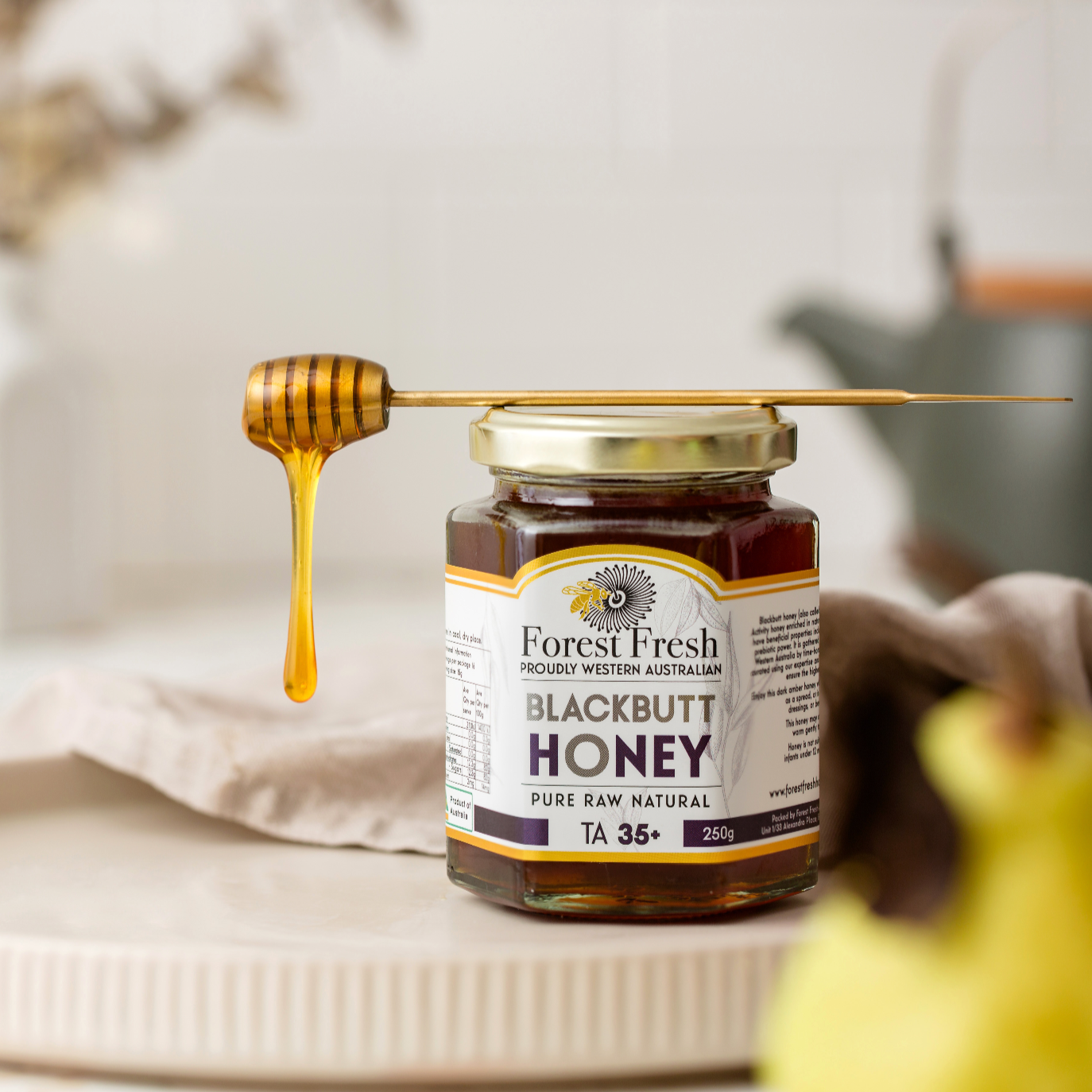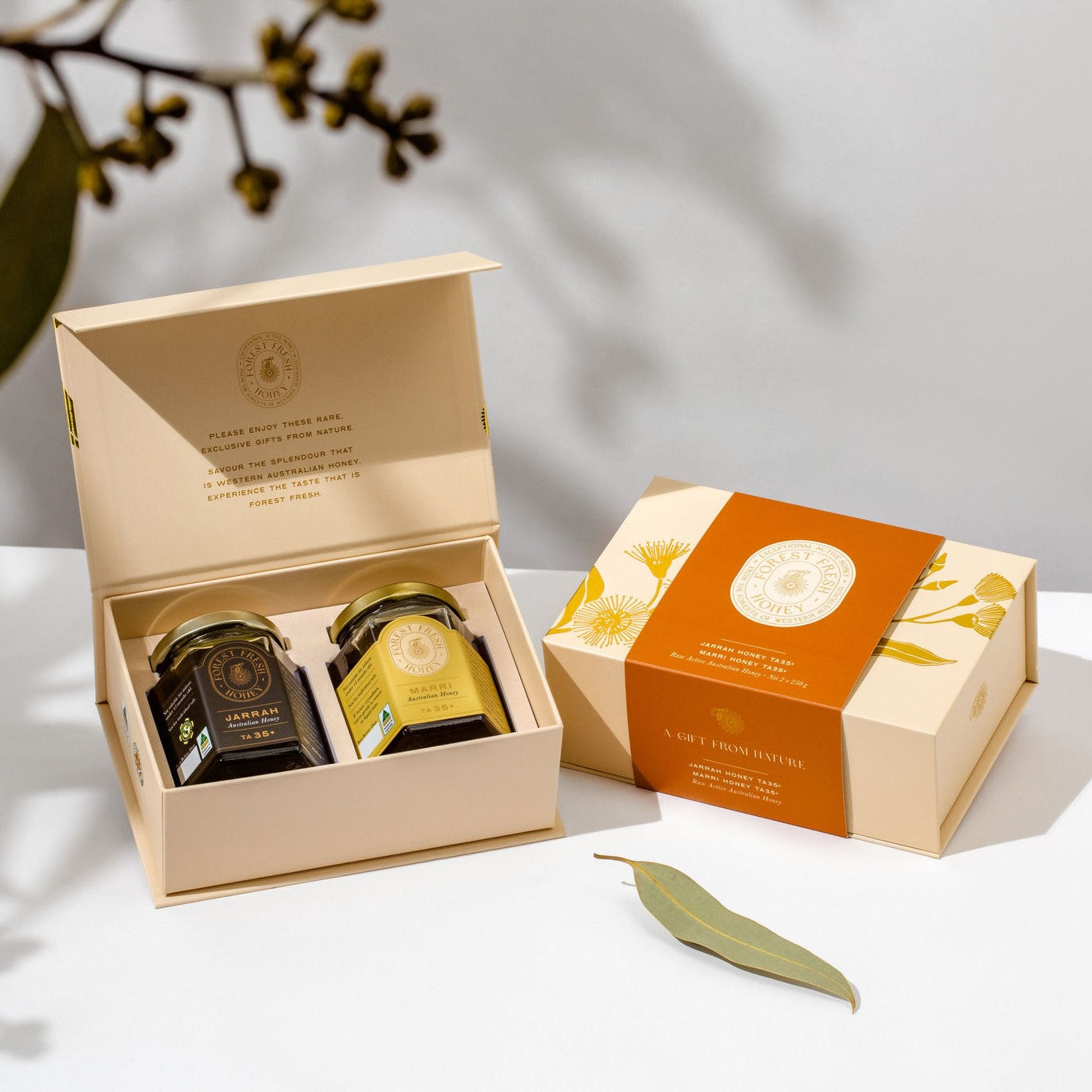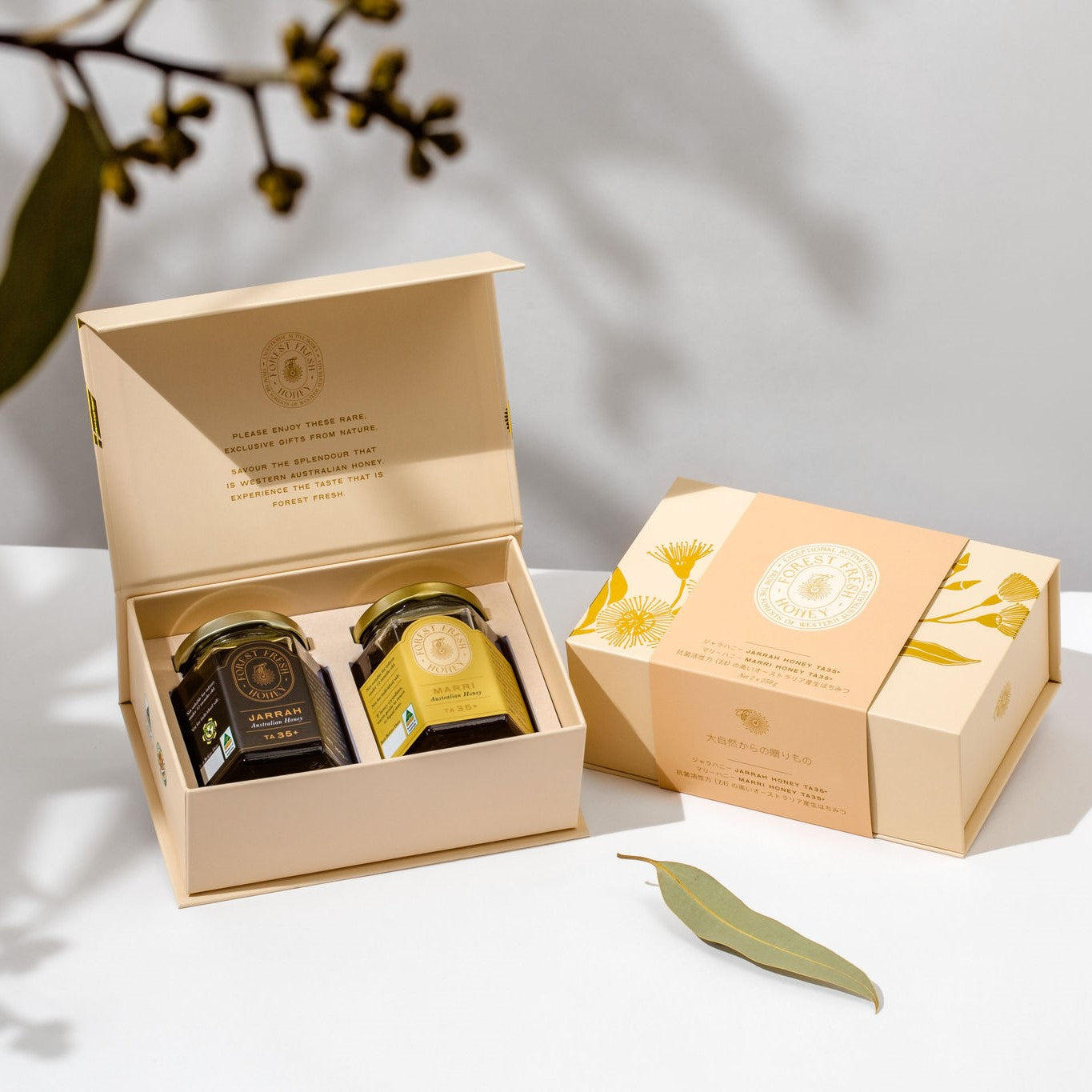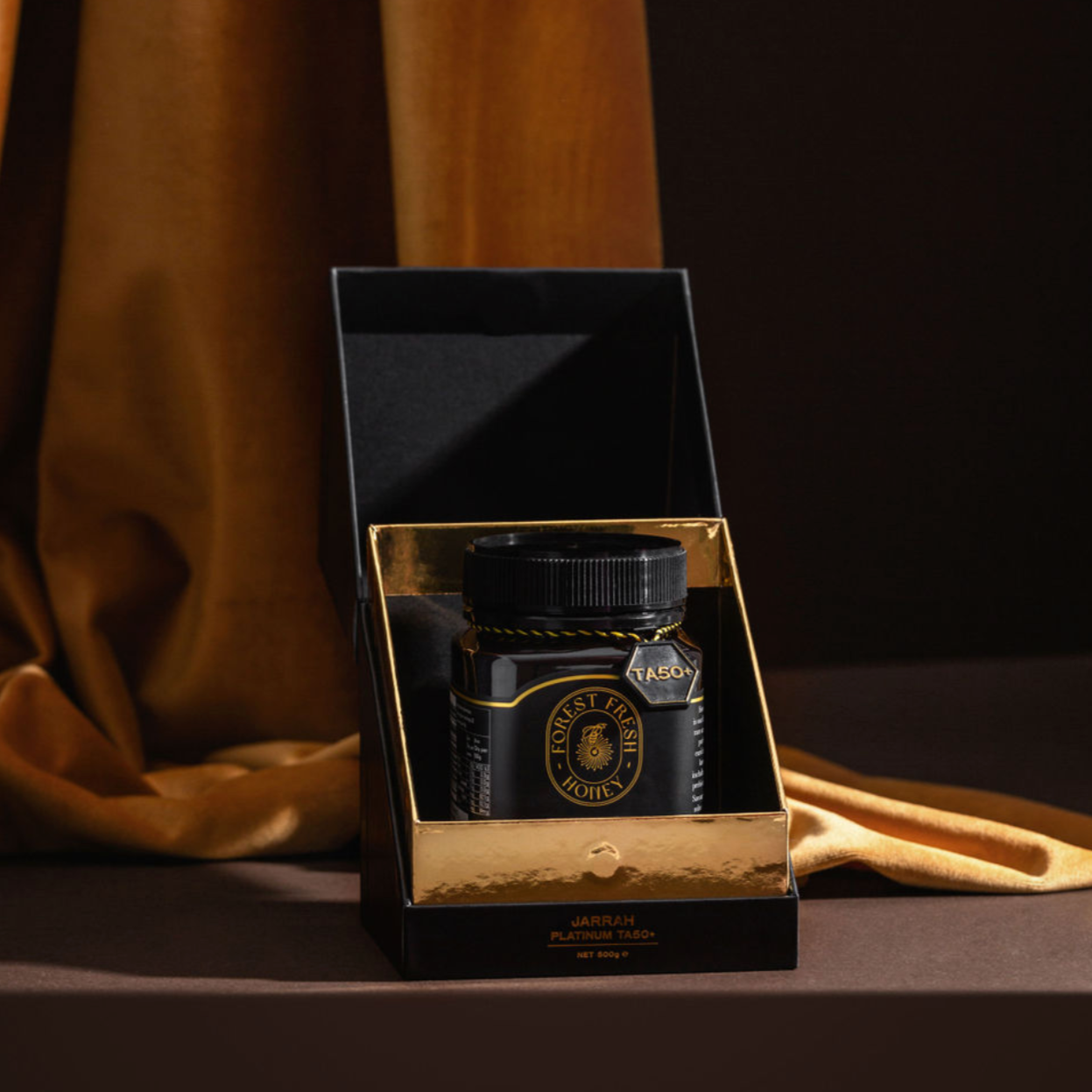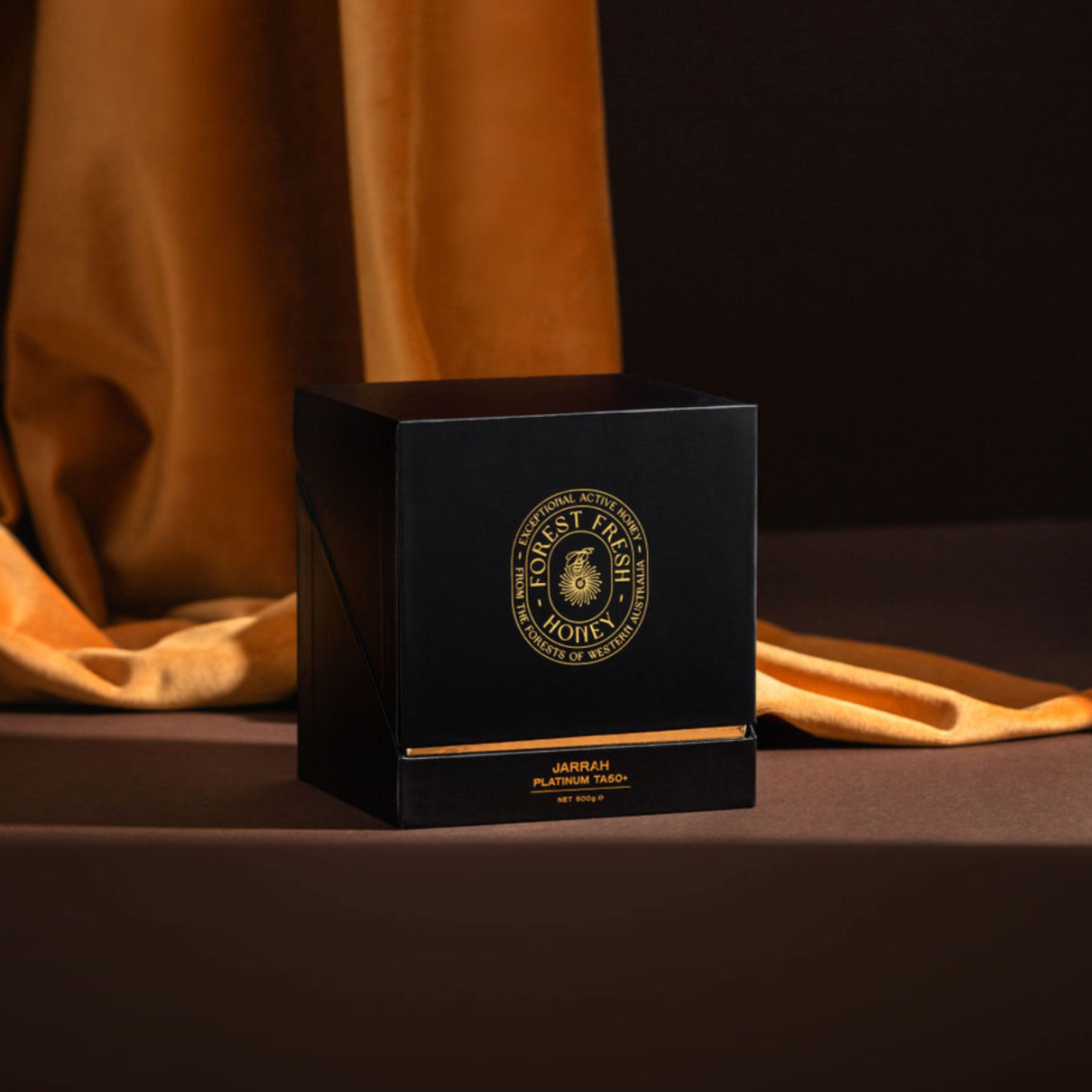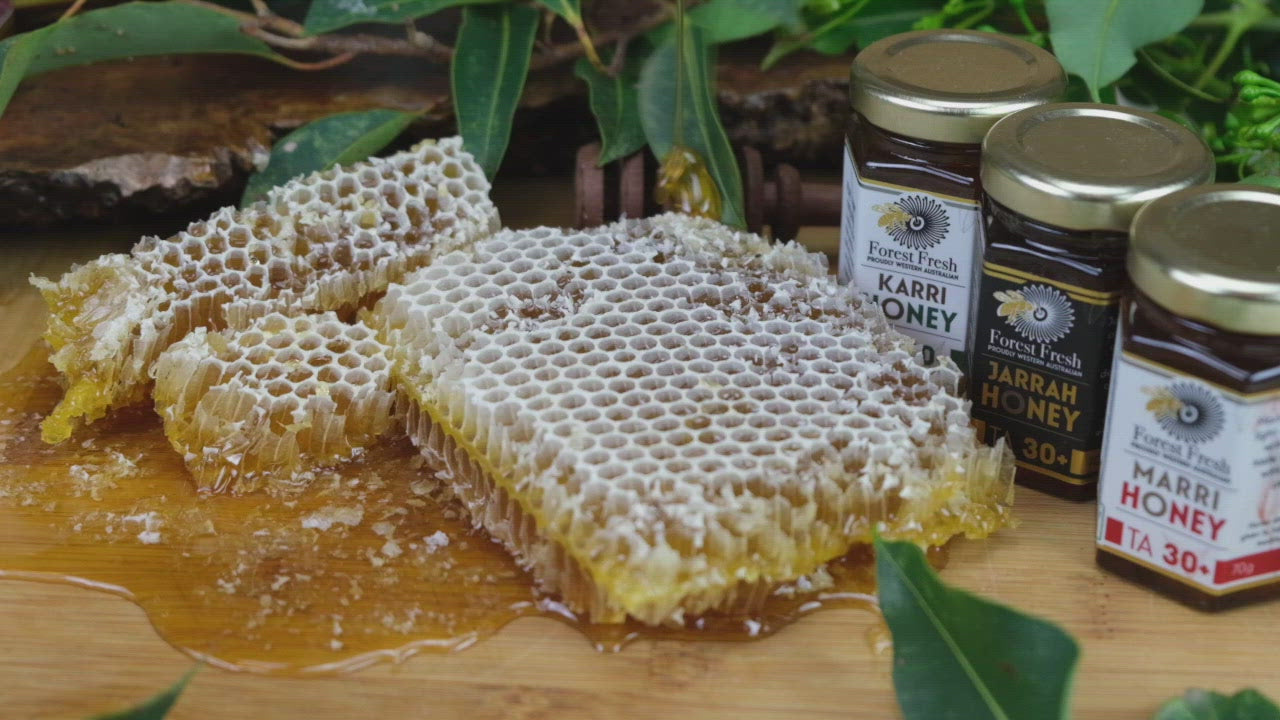
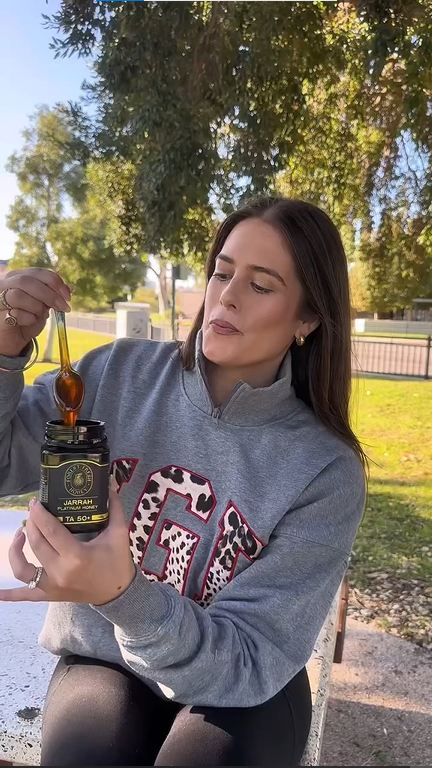
About Total Activity in Honey
Total Activity (TA) measures the antimicrobial power of honey. The higher the TA, the stronger its ability to fight bacteria and fungi. TA is one of the most reliable indicators of honey’s bioactive strength.
How TA IS Calculated
TA is the sum of two types of antimicrobial power in Honey: Peroxide Activity (PA) and Non Peroxide Activity (NPA).
TA = PA + NPA
What is PA and NPA you ask…
Peroxide Activity (PA) is the natural antimicrobial and antifungal power that bees have developed over millions of years of evolution to protect their honey from microbial infection as it forms (ripens) in the beehive. The PA results from a chemical reaction between a bee enzyme called glucose oxidase (GO), glucose and water. The reaction proceeds for as long as the unripened honey contains free water and yields a low concentrations of hydrogen peroxide that is lethal to the microbes attempting to colonise the honey, plus gluconic acid which also inhibits microbial growth.
PA is active as the nectar ripens but stops when the honey has formed and is dehydrated. Subsequent preservation of the honey is achieved by the low water activity and acidity. In most honeys, the GO is depleted by the time the honey ripens so it has no remaining PA. High PA honeys have residual GO which is reactivated when the honey is diluted with water, for example when you eat it (and it mixes with saliva) or put on a skin wound.
High PA honey is highly effective against many bacterial and fungal infections, plus some parasites and viruses. The PA is gentle on human tissue and the digestive system, so it can be used as an antiseptic drink (diluted or raw), and topically. But please always consult your doctor before using high PA honey to treat a wound, as the effectiveness can be diminished in situations where the enzyme catalase is present (for example if blood is present).
PA also has no adverse effect on the taste of the honey.
Non-Peroxide Activity (NPA) includes all the antimicrobial power that is derived from phytochemicals in the nectar that bees collect from flowers, plus the acids in the honey. Trees produce many phytochemicals to protect themselves from bacterial infection and other purposes, and some of these chemicals can be present in the nectar. When the bees convert the nectar to honey, the chemicals become much more concentrated and Active. However, these chemicals often give the honey a bitter or antiseptic flavour.
The most potent NPA phytochemical is methyl glyoxal (MGO) which is found in Manuka honey. NPA is typically unaffected by catalase.
MGO is a toxic chemical and can be harmful to people with diabetes. It is recommended that only Manuka honey with UMF15 (MGO 515) or lower be eaten on a regular basis. Honey with higher UMF values should be eaten intermittently or used topically.
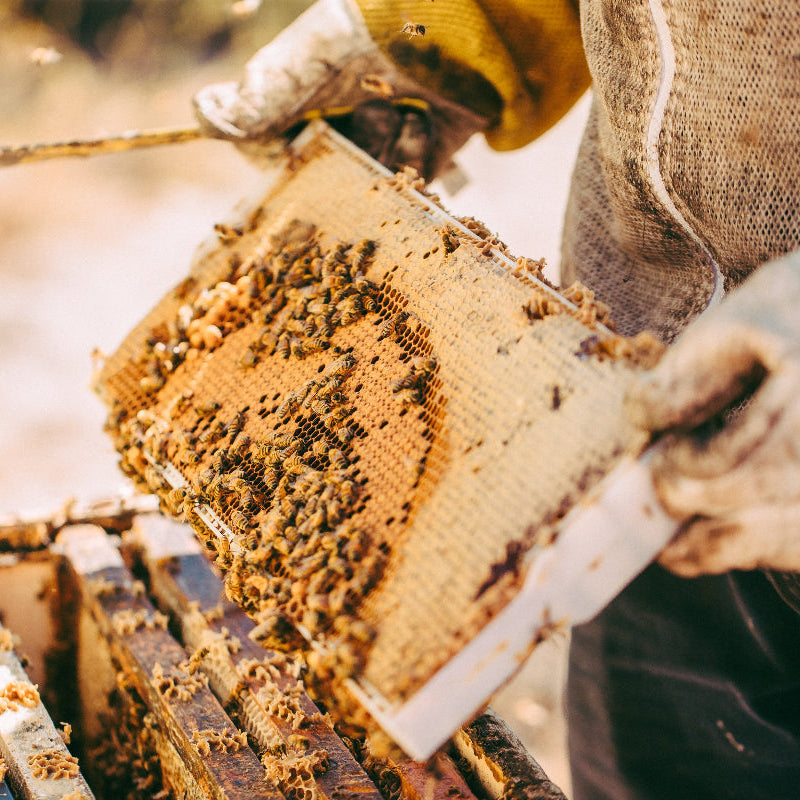
How Does High Activity Honey Support Health?
High TA honey has powerful antibacterial and antifungal properties. When consumed or applied topically, it produces a gentle release of hydrogen peroxide, helping to reduce harmful microbes and promote healing. It’s a natural alternative for immune support, skincare, and overall wellness.
Antibacterial Strength
Antioxidant Power
Anti-Inflammatory Properties
Easy To Digest
